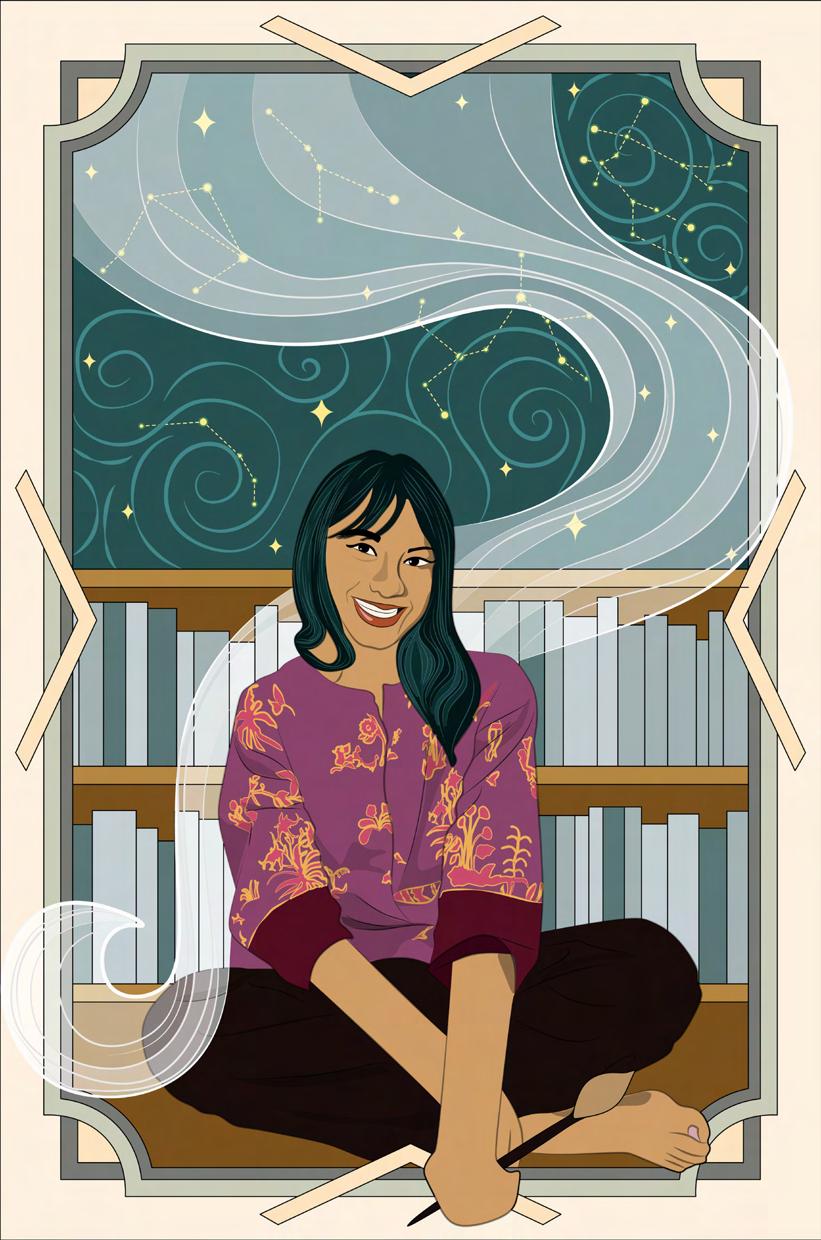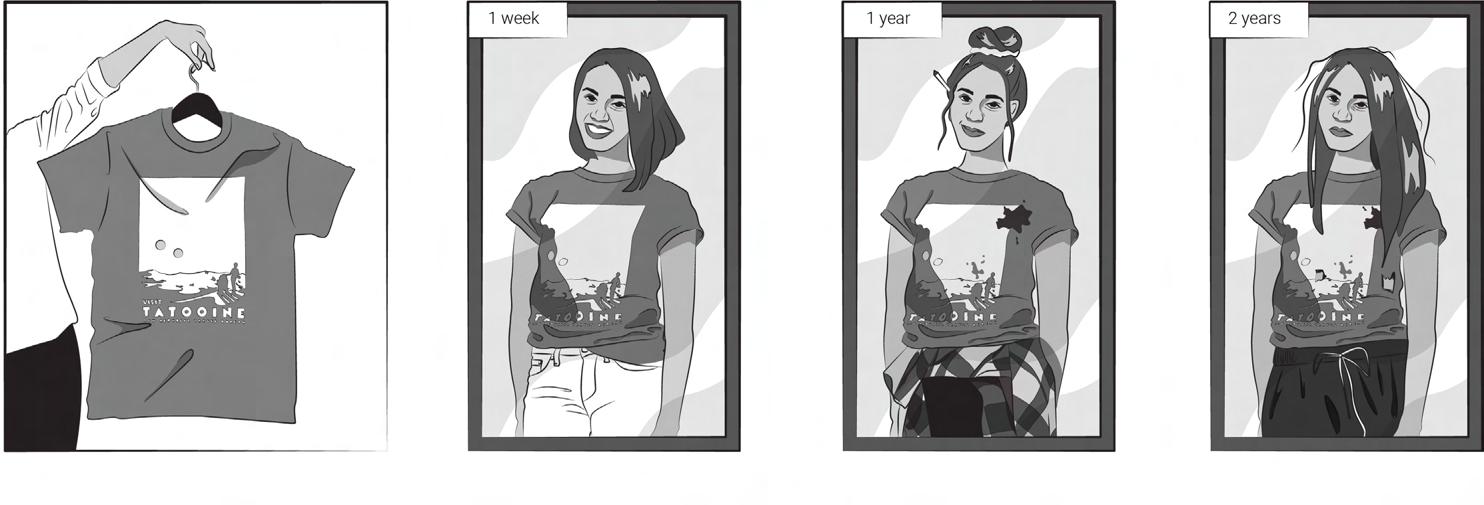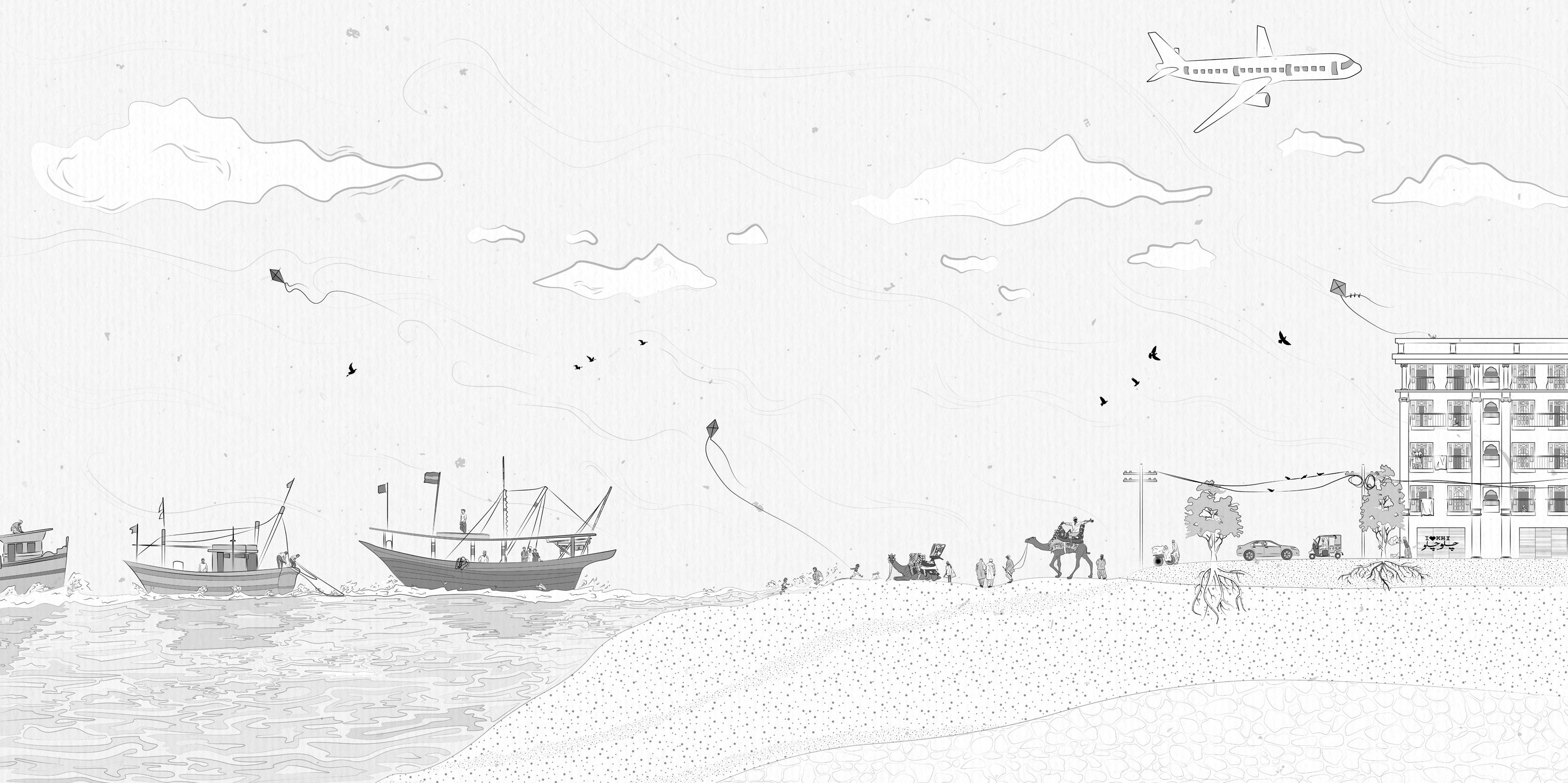

PORTFOLIO
Haadiah Khan // Selected Work
2020-2023
Education
Master of Architecture
University of Toronto
2020-2023
Honours Bachelor of Arts in Architectural Studies
University of Toronto 2016-2020
Awards
Academic Merit Award
Graduating Award 2020
Deans List Scholar
Academic Award 2018-2020
Skills
Rhinoceros 6/7
Grasshopper
SketchUp
ARCGIS
Adobe Illustrator
Adobe Photoshop
Adobe InDesign
Adobe After Effects
Cargo
Hand Modelling
Laser Cutting
3D Printing
2023
Work Experience
Student Services Ambassador
Daniels Faculty of Architecture / Toronto Canada / 2022-Present
Assisted the Office of the Registrar and Student Services in projects related to improving the student experience and administrative processes, including answering phones, replying to emails, updating and creating resource guides and leading prospective students on building tours.
Teaching Assistant
Daniels Faculty of Architecture / Toronto Canada / 2022-2023
Helped course instructors in multiple Graduate courses, including Site Engineering, Building Science and History of Modern Architecture. This included providing feedback on coursework, helping students understand course concepts, and leading discussions based on lectures and readings.
2022
Design Camp Instructor
Daniels Faculty of Architecture / Toronto Canada / 2022
Led lectures and discussions on architecture, design and representation with middle and high school students. Taught students the basics of Adobe Photoshop and SketchUp. Critiqued and helped develop student projects, while keeping guardians updated on their progress.
2021
Architecture Summer Intern
Open Door Design Studio / Karachi Pakistan / 2021
Experimented with ways of recycling and remolding waste plastic to produce small scale products. Researched, compiled information on plastic waste and created detailed graphics for this project. Co-designed cards for studio workshop products. Assisted in the exhibition held for their new product: paper-crete lights. Organized studio models and equipment and assisted in documenting the studio’s book collection
2019
Architecture Summer Intern
Studio Subtractive / Karachi Pakistan / 2019
Worked on a research proposal for a vacation resort in the Himalayas. Included gathering information on the vacation resort, doing a preliminary site analysis of the resort, proposing potential sites for the resort and creating detailed maps of this region.
2017
Architecture Summer Intern
EA Consulting / Karachi Pakistan / 2017
Created parti diagrams for project proposals. Produced basic block models and rendered early design proposals in Photoshop.
TABLE OF CONTENTS

1 | WEAVING A COMMUNITY
Thesis Project
Instructor: Marina Tabassum
2 | HIDDEN HISTORIES
Climatorium Design
Instructor: Maria Denegri (Partner | Cezzane Ilagan)
3 | OVER(LEA) DENSE
Collective Housing
Instructor: Jon Cummings (Partner | Lane Johnson)
4 | MUSEUM FOR CULTURAL EXCELLENCE: PATH TO RECONCILIATION
Museum Design
Instructor: Tom Ngo
5 | PAKISTAN, PLASTIC & REPURPOSING
Material Exploration
Studio: Open Door Design Studio
6 | VISUAL STORYTELLING ART WORK
WEAVING A COMMUNITY
Balochistan has historically been a blind spot for the Pakistani government; due to its negligence, Baloch women suffer the consequences of disenfranchisement with limited economic growth and low literacy rates. Despite Baloch women making significant cultural and financial contributions, they are still the most vulnerable members of society. In August 2022, the federal government’s indifference resulted in astronomical levels of damage in Baloch villages during recent historically unprecedented levels of flooding. The project proposes a newly imagined typology for a Women’s Vocational Centre that transforms into a Flood Relief Shelter for the entire village during the monsoon season. In doing so, it builds on existing networks to simultaenously mitigate the worsening climate crisis as well as improve existing gender issues in rural society.

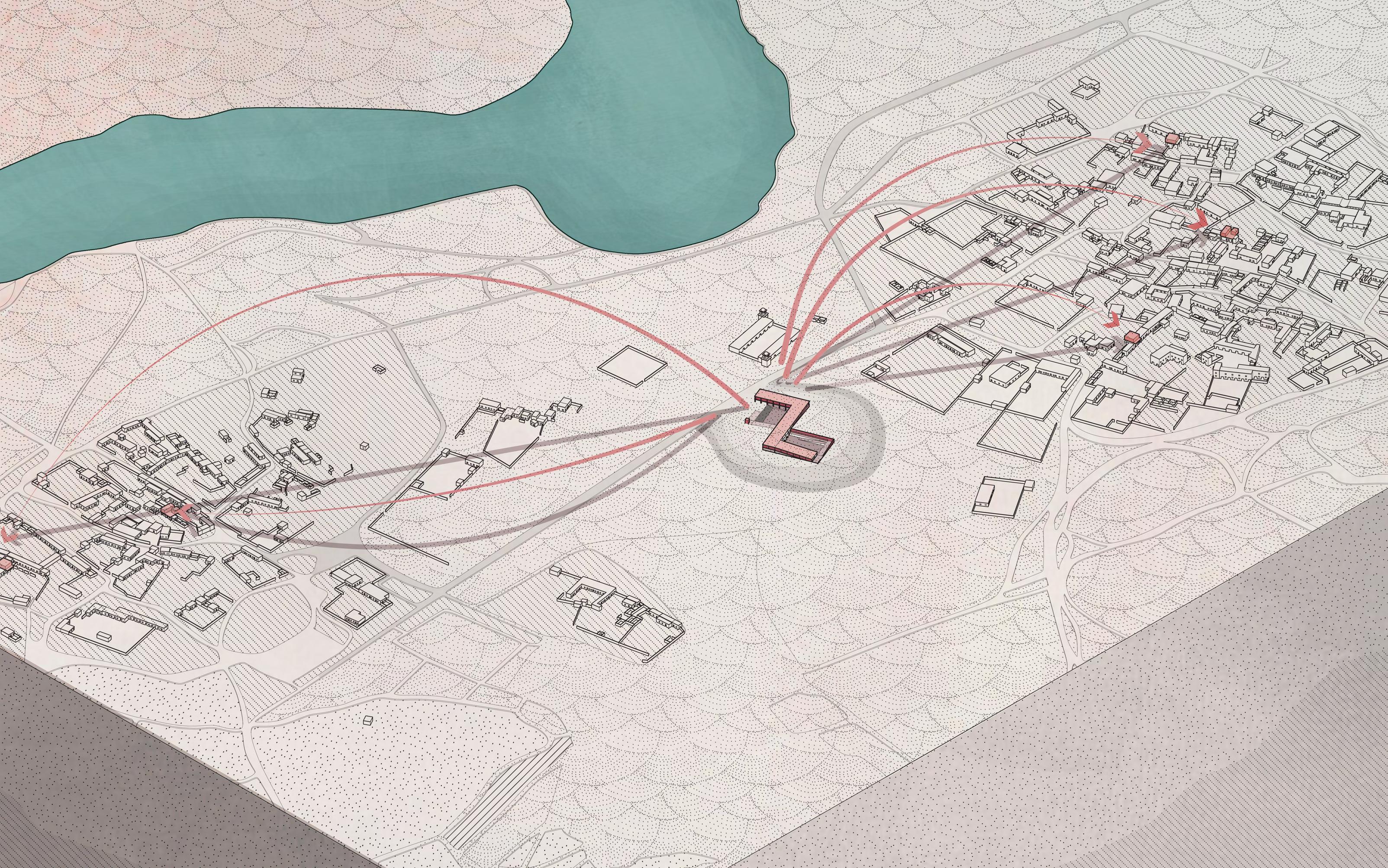

Phase 1 | Shelter Pods
Researching the region highlighted the fact that change is something that happens gradually. It was important in this proposal to avoid taking on a heavy handed approach that dismissed centuries’ old ways of thinking. Therefore, this proposal began with small scale interventions from which it could grow. Due to the limited mobility that women in Baloch society are afforded, the project consists of two phases. It starts with the emergency shelter pods within the fabric of the village and culminates in the larger building at the centre of the village. The structure of these pods is developed from existing familiar systems used to make local beds known as “charpais.”
The purpose of these pods is partially to support the size of the residents in the village during an emergency. However it is also meant to emphasize the importance of women and women-coded spaces in a society where they remain unacknowledged.

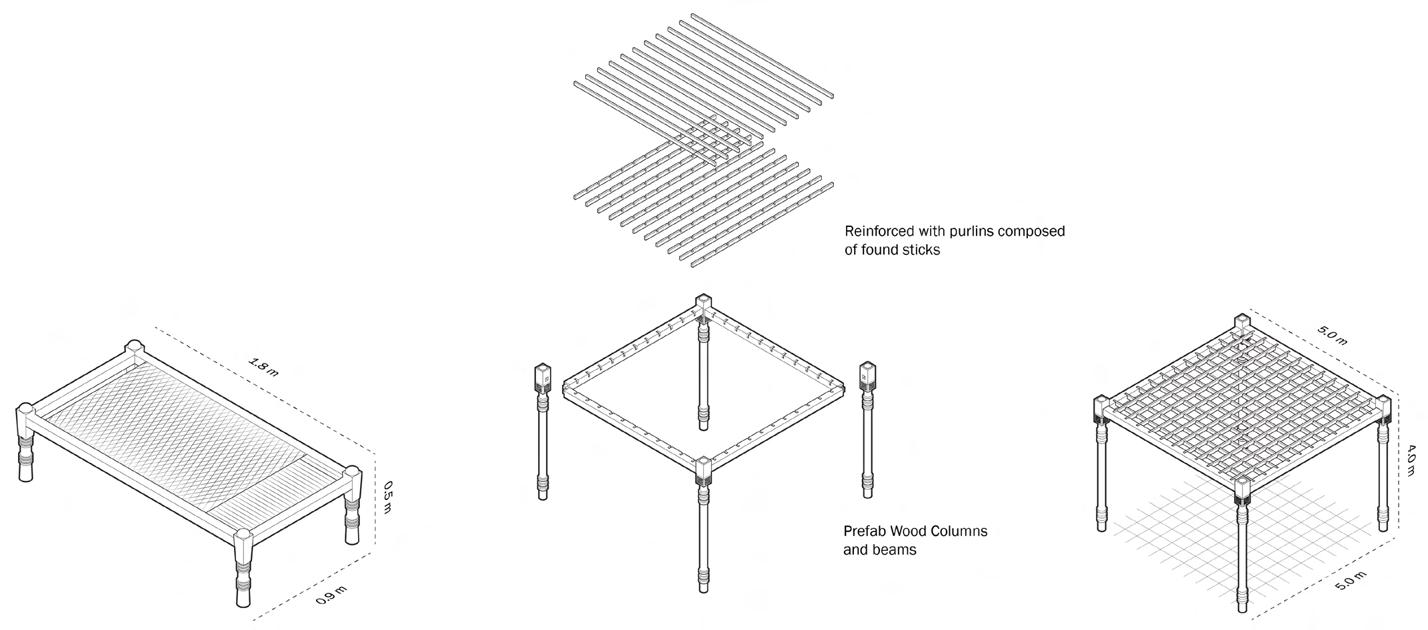

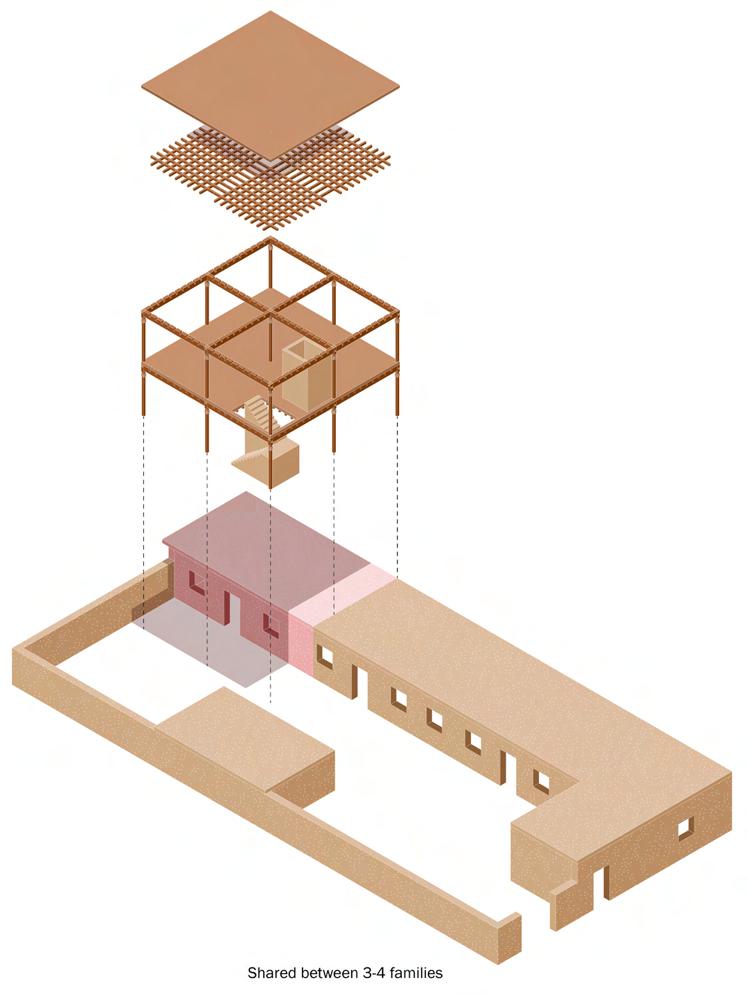
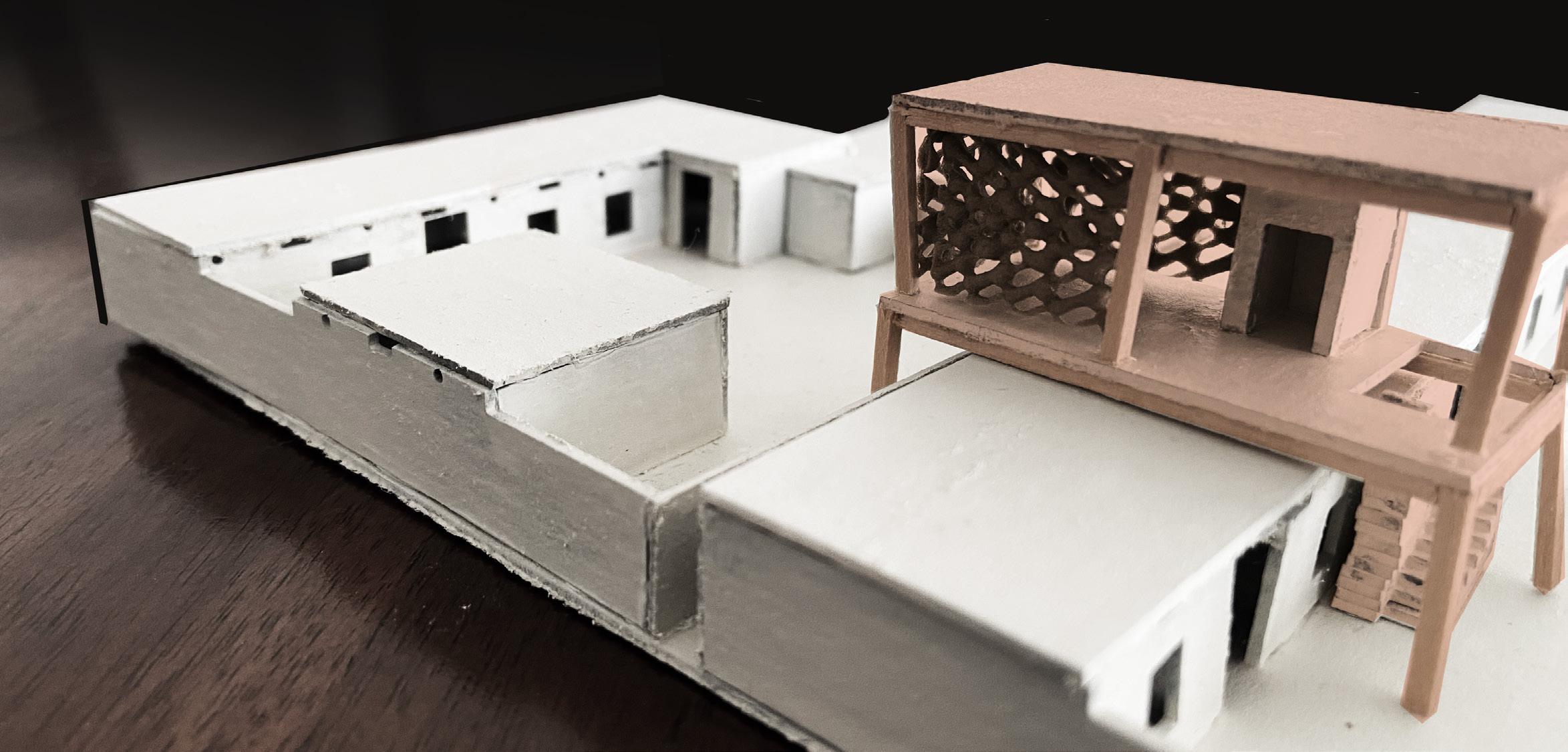
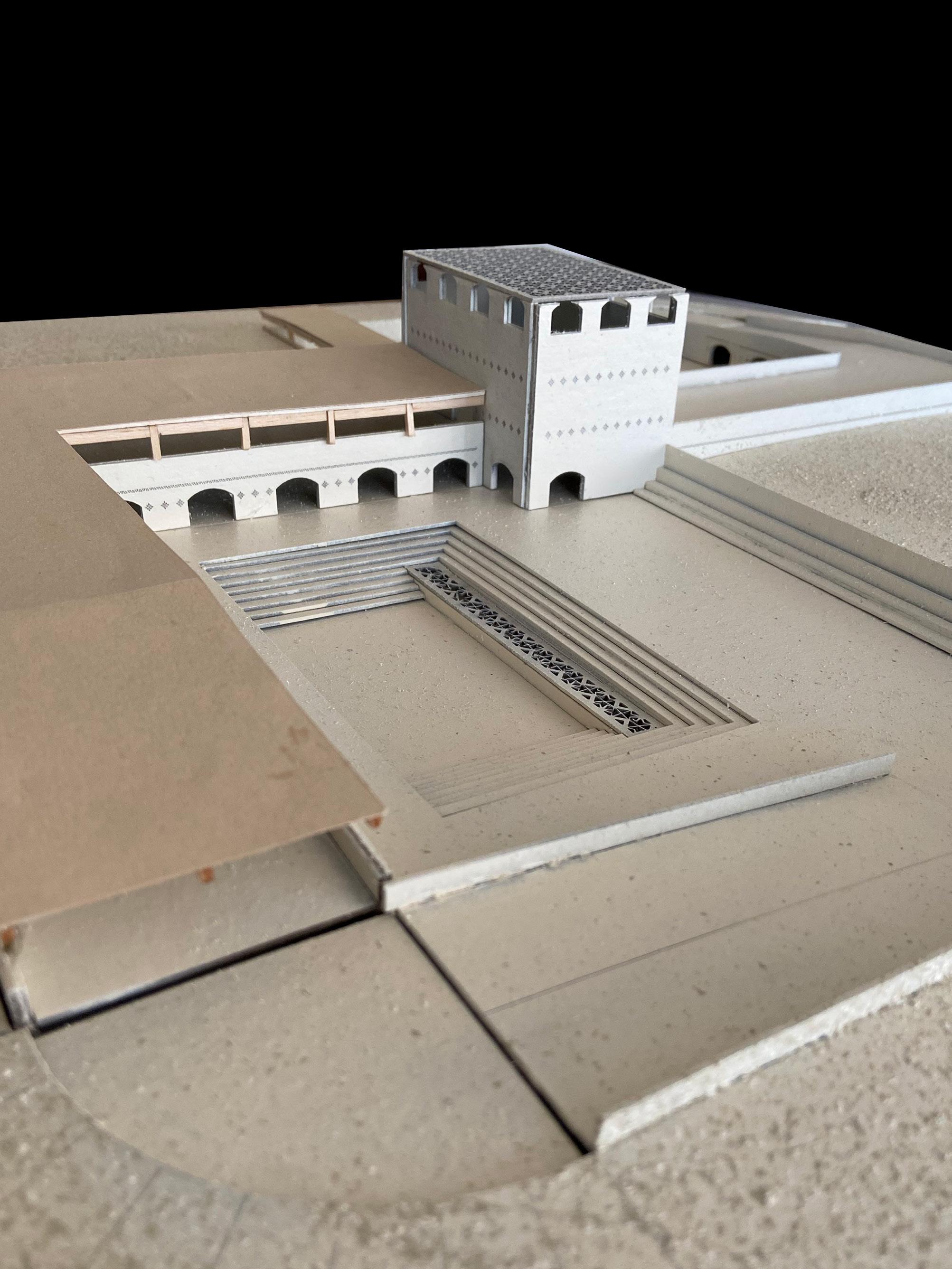 Shelter Pods
Vocational Shelter
Shelter Pods
Vocational Shelter

Phase 2 | Vocational Shelter
The second phase of the project consists of the vocational shelter located at the centre of the village. The circulation, derived from the weaving motion of the charpai, consists of three movements. Each movement is connected to one of three programs that define this space:
Food | This movement begins in the women’s section, through the herb garden and outdoor kitchen, up through the grain storage and down through the public courtyard
Storytelling and Learning | This movement consists of learning through training and education spaces that occupy the first floor and to the highest point of the central circulation where stories and lullabies can be told to the entire village, much like a mosque.
Embroidery | This movement begins with the raw material coming in from the public courtyard, stored in the central structure, taken to be embroidered on the second floor and then brought back down to be sold elsewhere or in the local outdoor market.
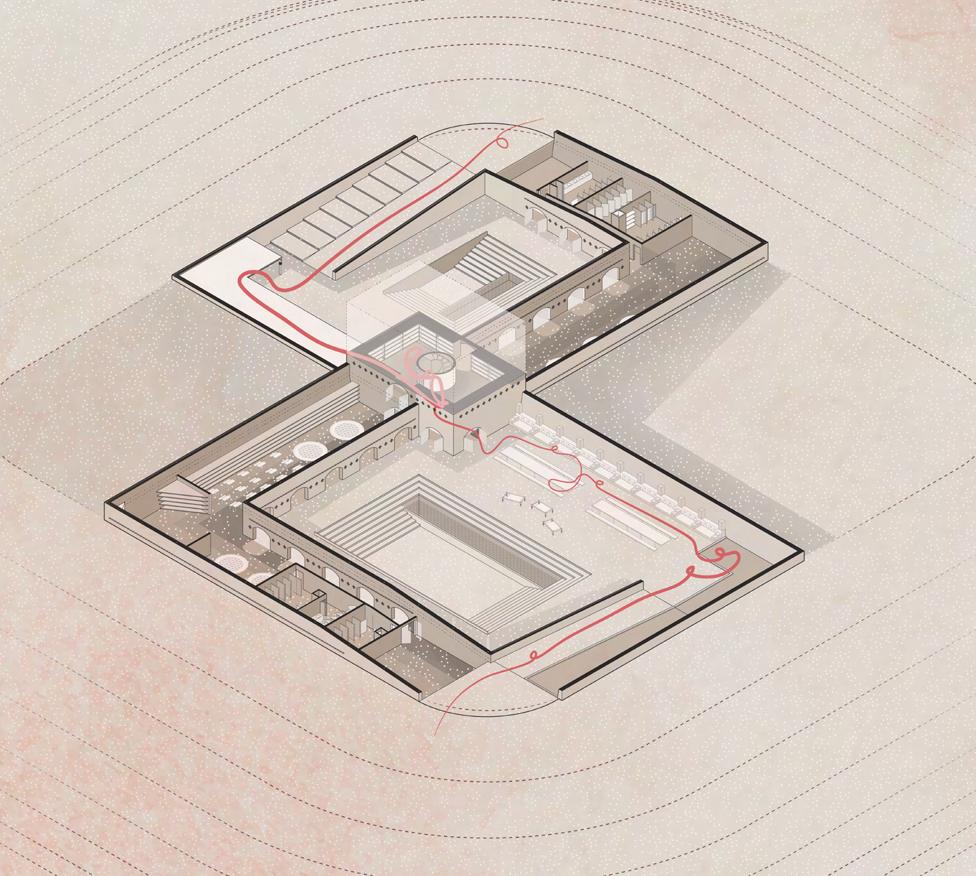

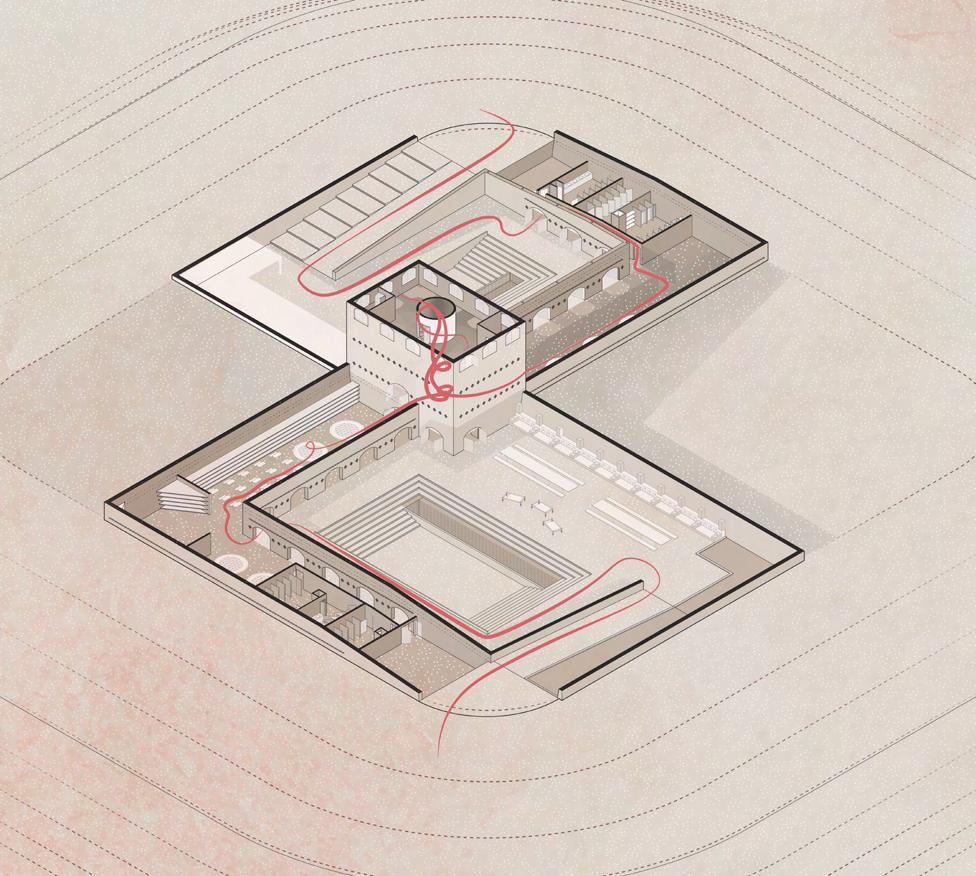
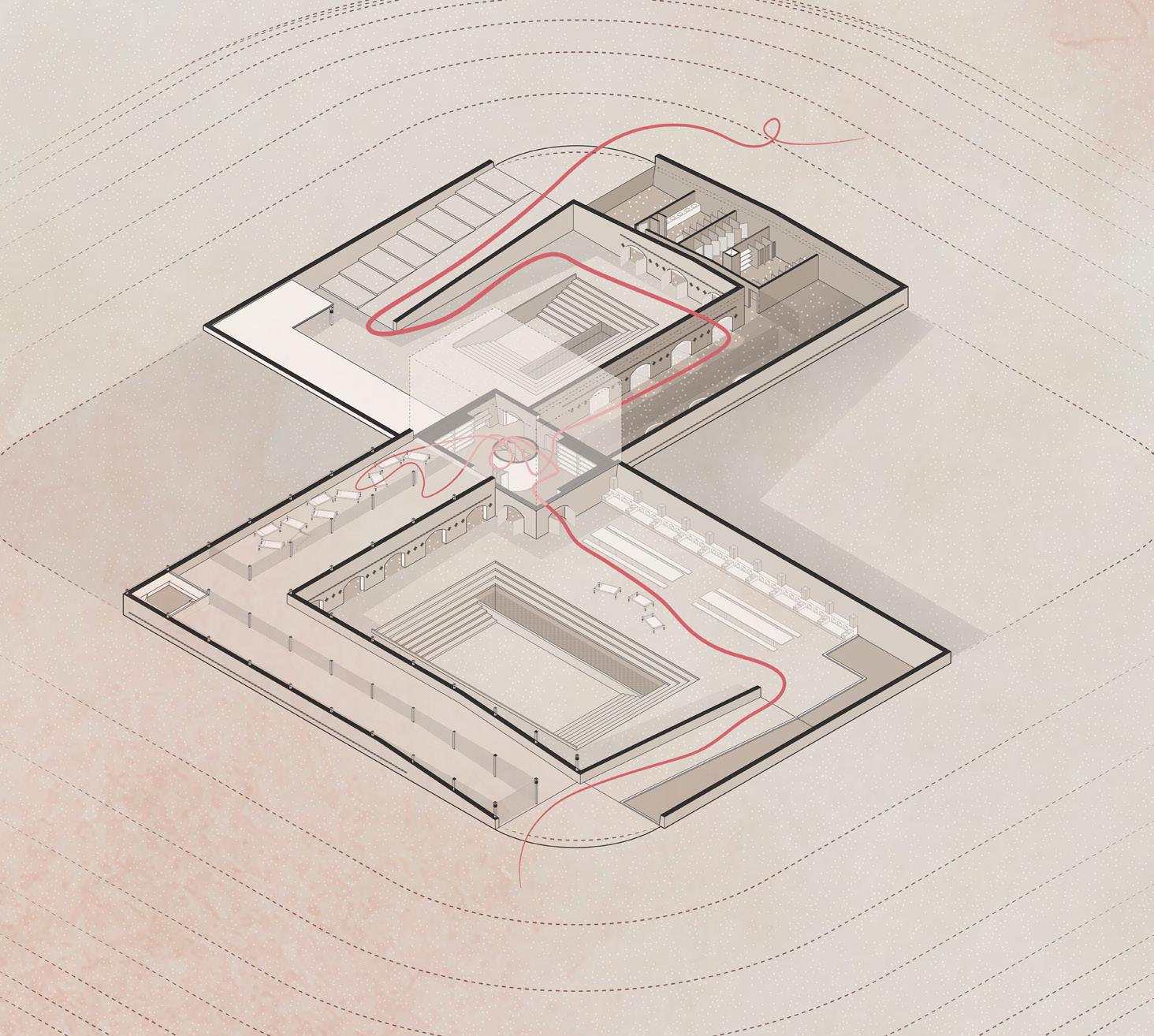




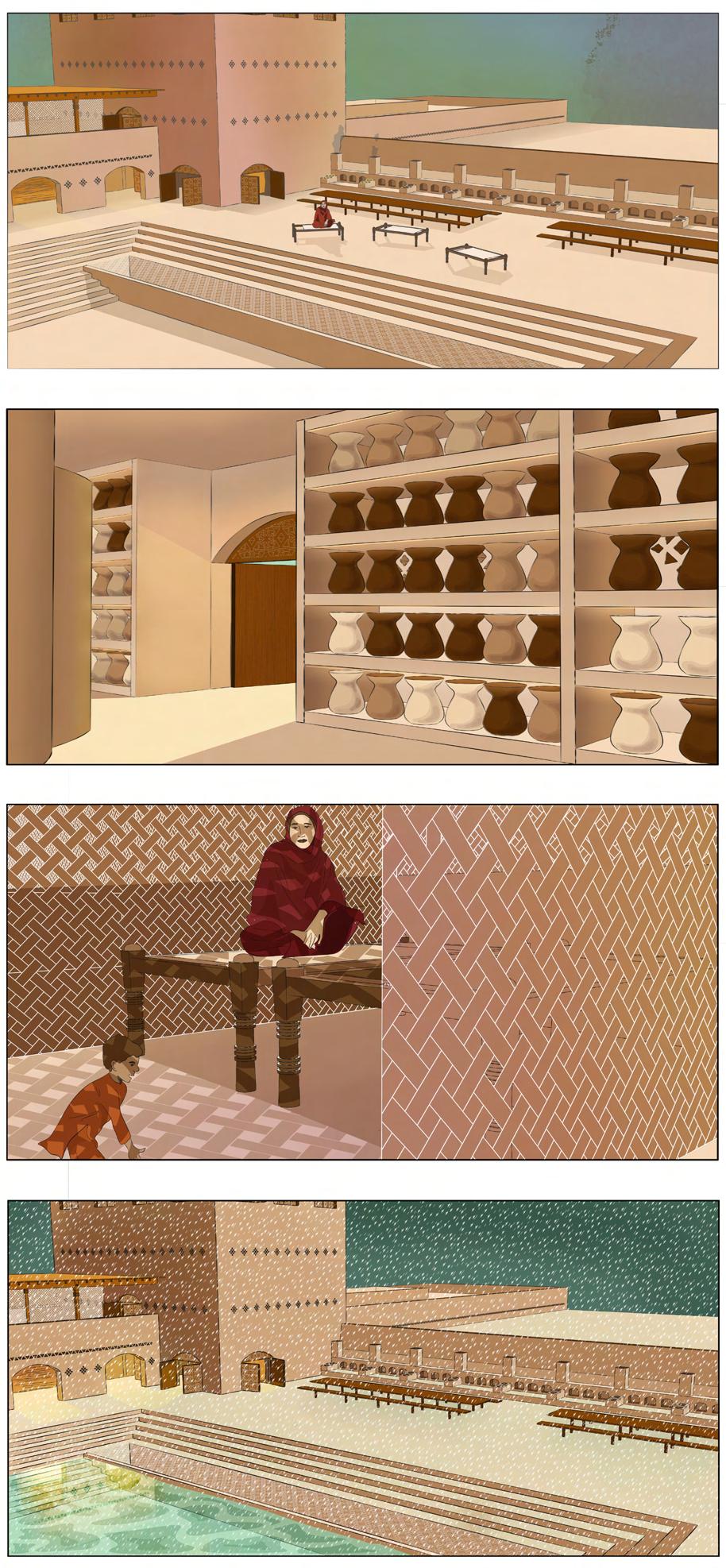
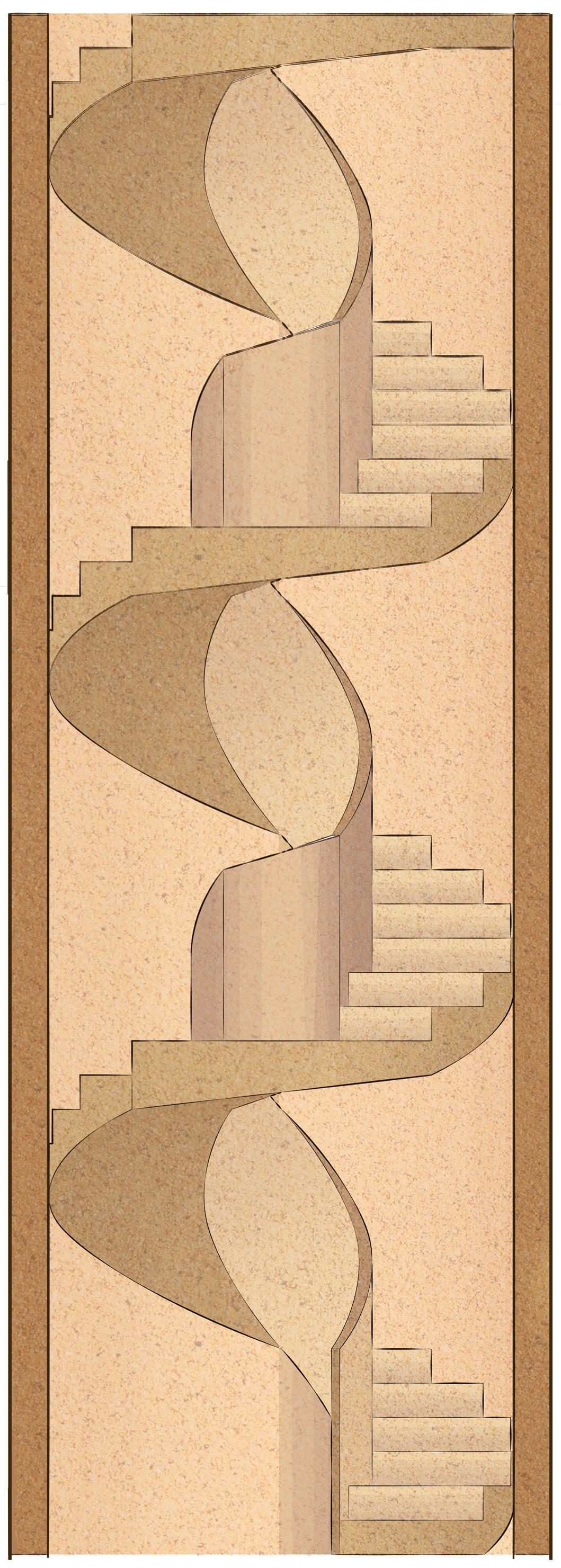
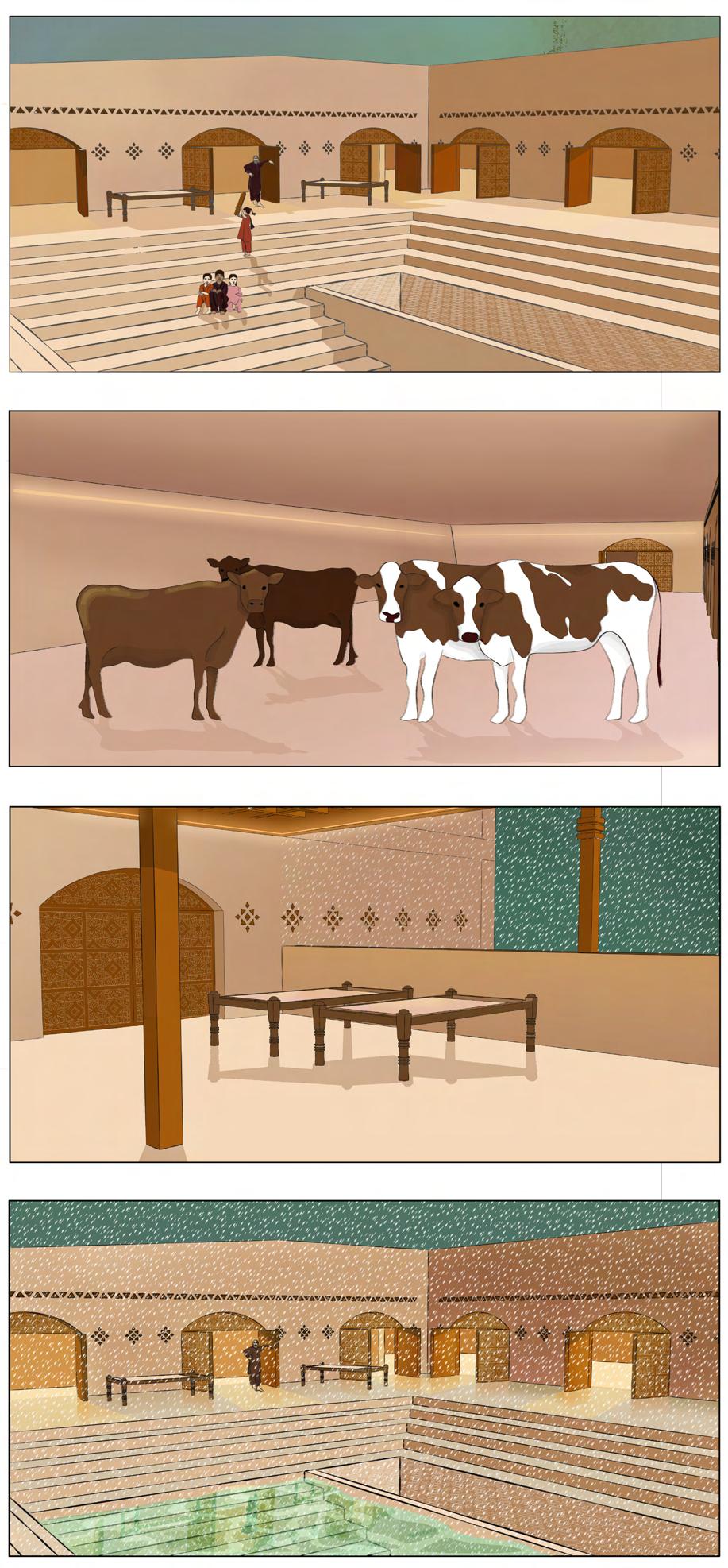
HIDDEN HISTORIES
ACADEMIC | IN COLLABORATION WITH CEZZANE ILAGAN | 2022
New York City is known, among other things, for the myriad of different cultures it is home too. Yet, even with its celebration as a place of diverse cultures, there are histories and stories left out. Cultures whose stories are incredibly important to the physical building of the city. Histories that include: the Lenape, New York’s African-American slave history, and the Mohawk, who made long journeys from Awkesasne and Kahnawake to provide for their families as ironworkers, helping to build some of Manhattan’s iconic buildings and bridges. With all eyes on the Climatorium as an anchor point location in the fight for climate change, the aim of this proposal is to reveal these hidden histories to decolonize environmental activism.In acknowledging the hidden histories we intend to implement them on our site through the use of public spaces and each move we make intends to help generate spaces of shared experiences and learning.

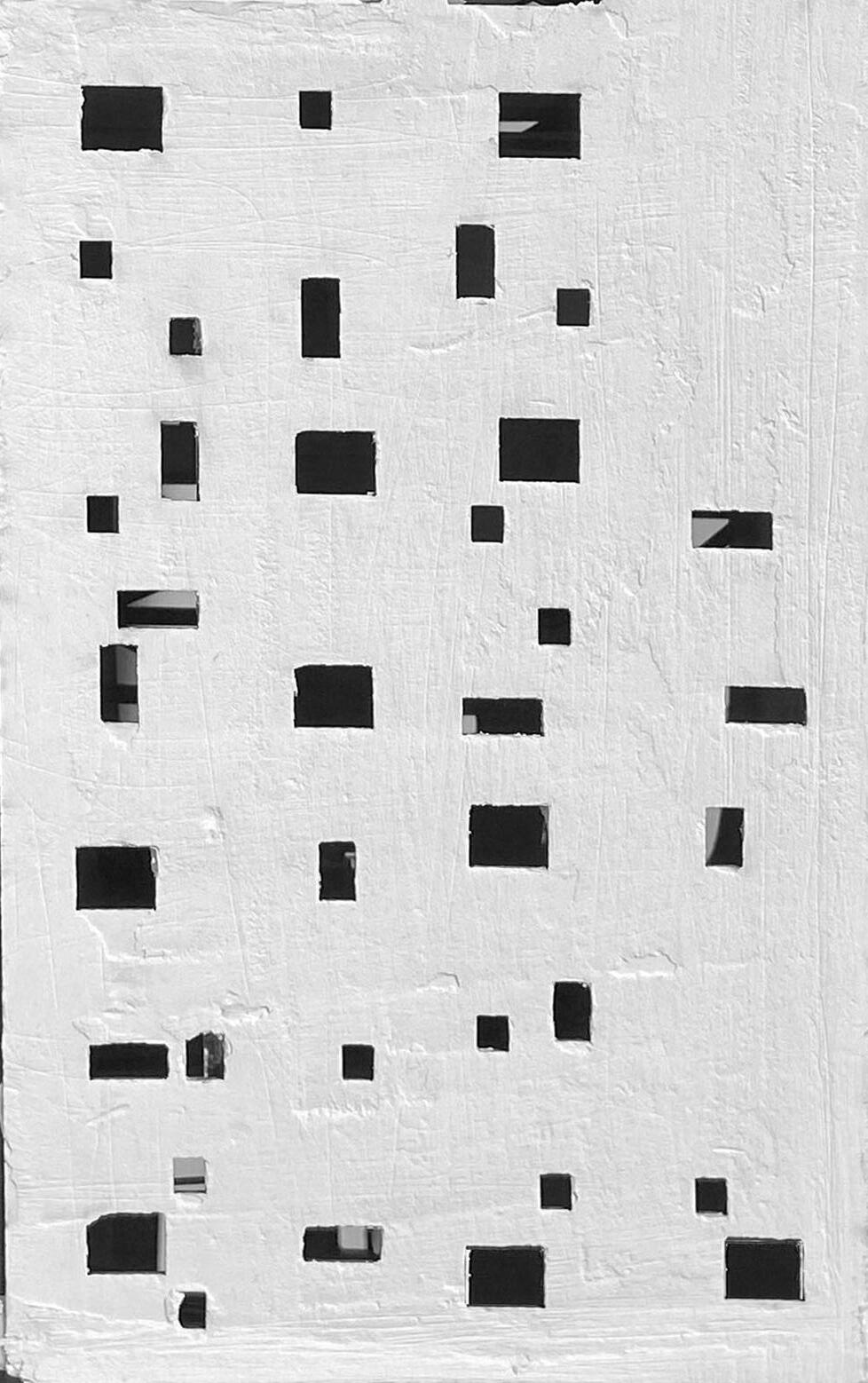
 Climatorium
Fenestrations
Climatorium
Fenestrations
The form of the building is generated as a reaction to the artificial river. Both forms pinch at the point where the river runs underground. Within the Climatorium, the different programs have a relationship with one another built through the circulation. The circulation spaces are not treated as static. Instead doubling as a learning spaces to allow visitors to stop, sit, reflect, and share ideas. Throughout our building there are stairs, mezzanines, and elevated walkways to allow for more storytelling spaces as well as views into other spaces below. The circulation in our building begins as a defined space on the ground. However, as one moves up, these spaces are meant to begin merging with the other programmed spaces to create a more open floor plan. This can be seen in the interior vignettes in conjunction with the circulation diagram and floorplans.
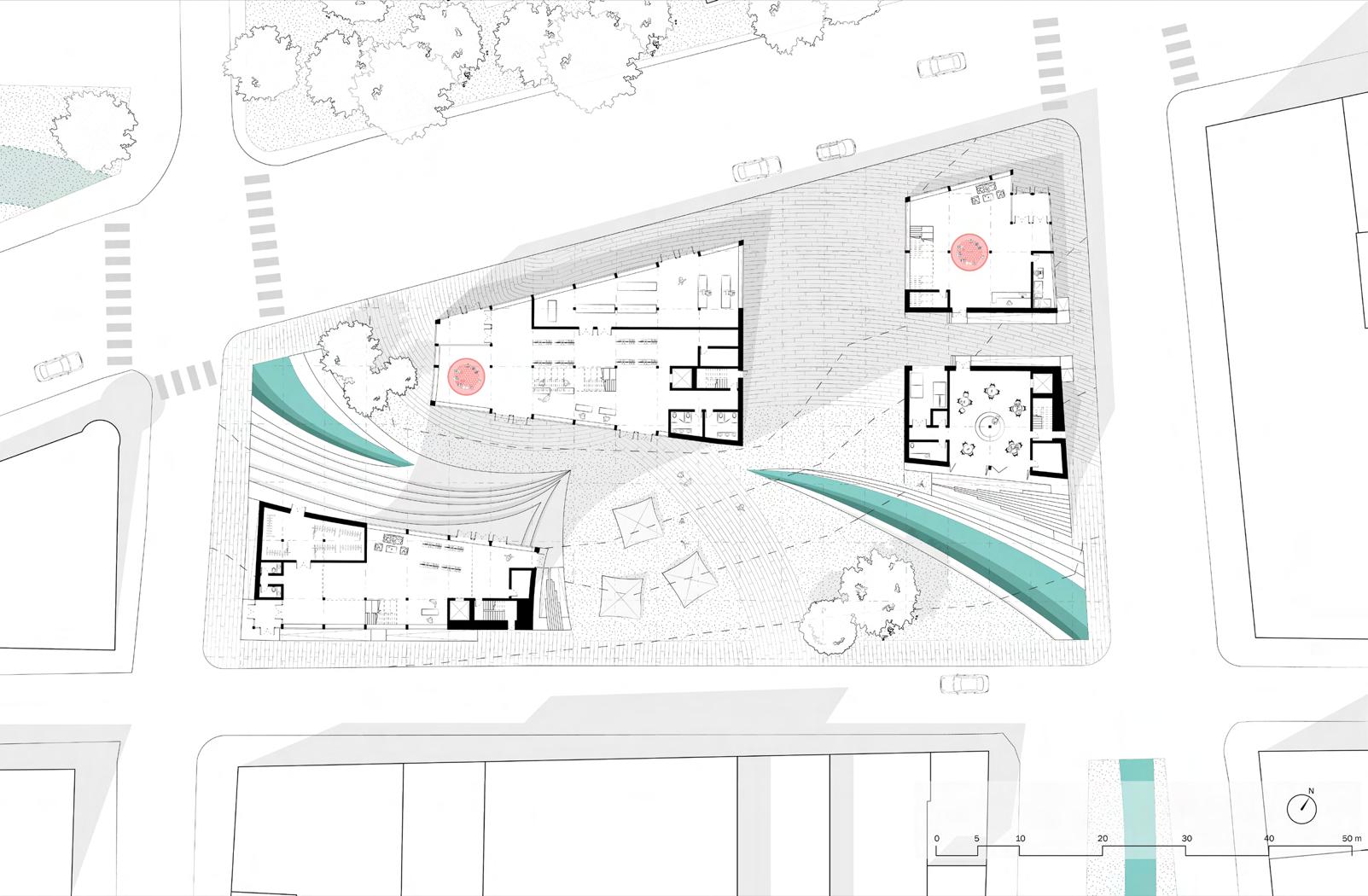

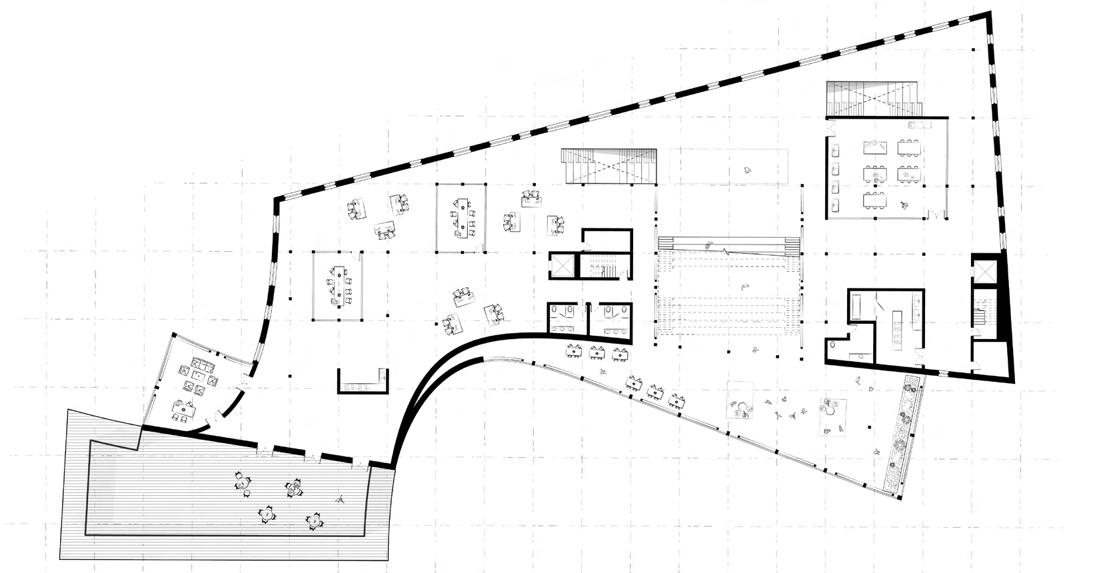
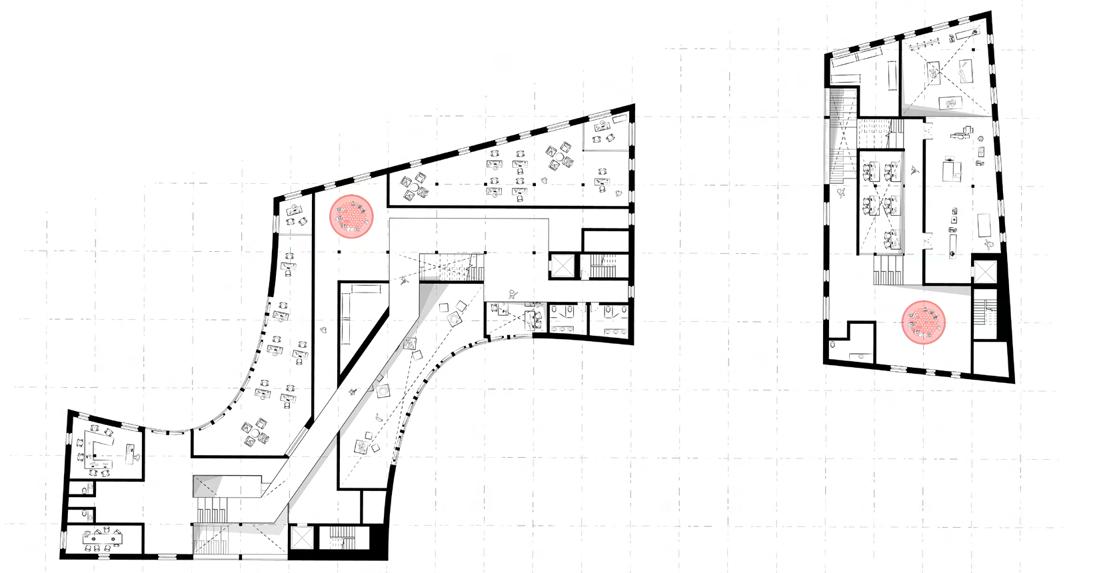
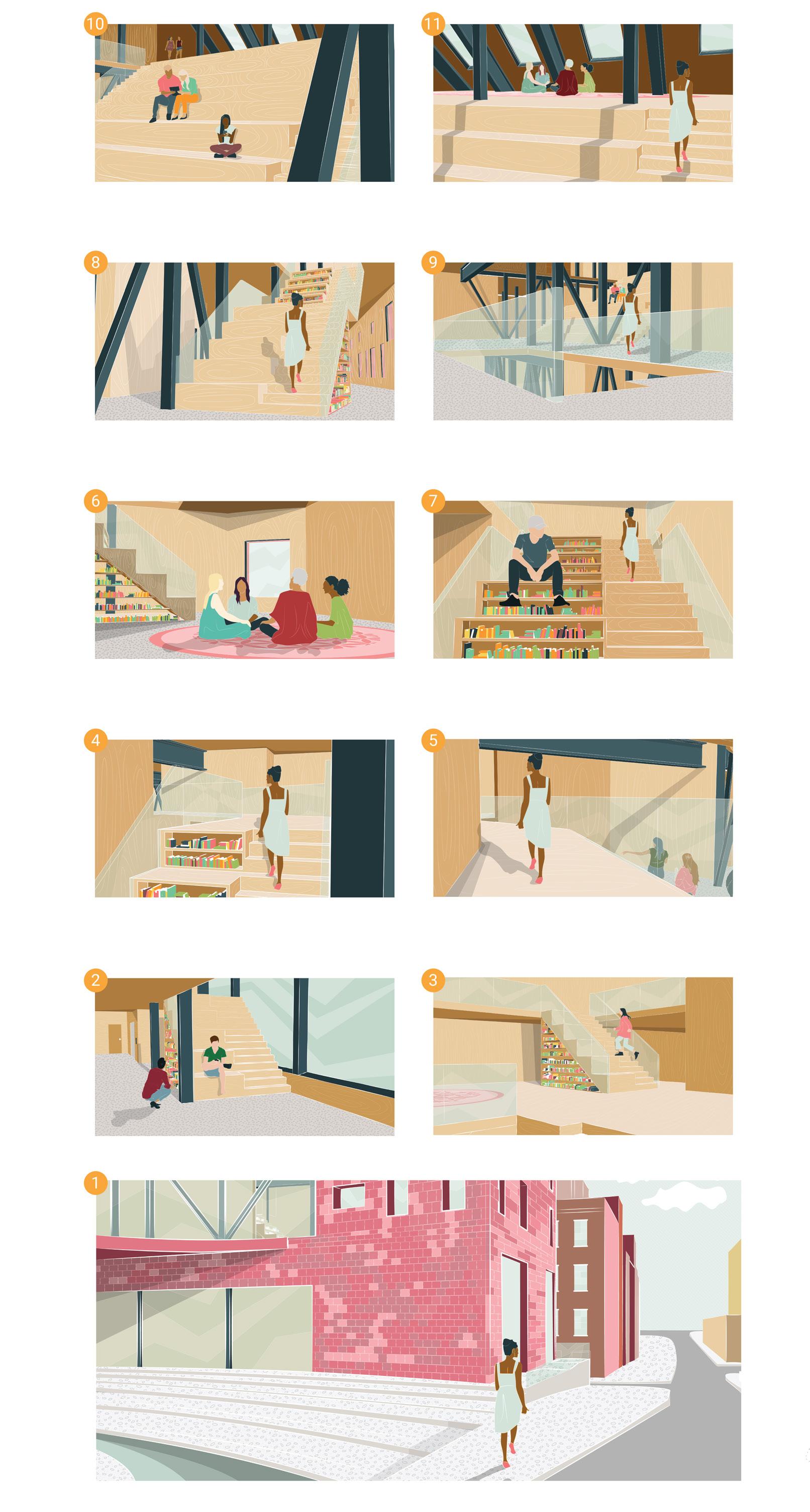
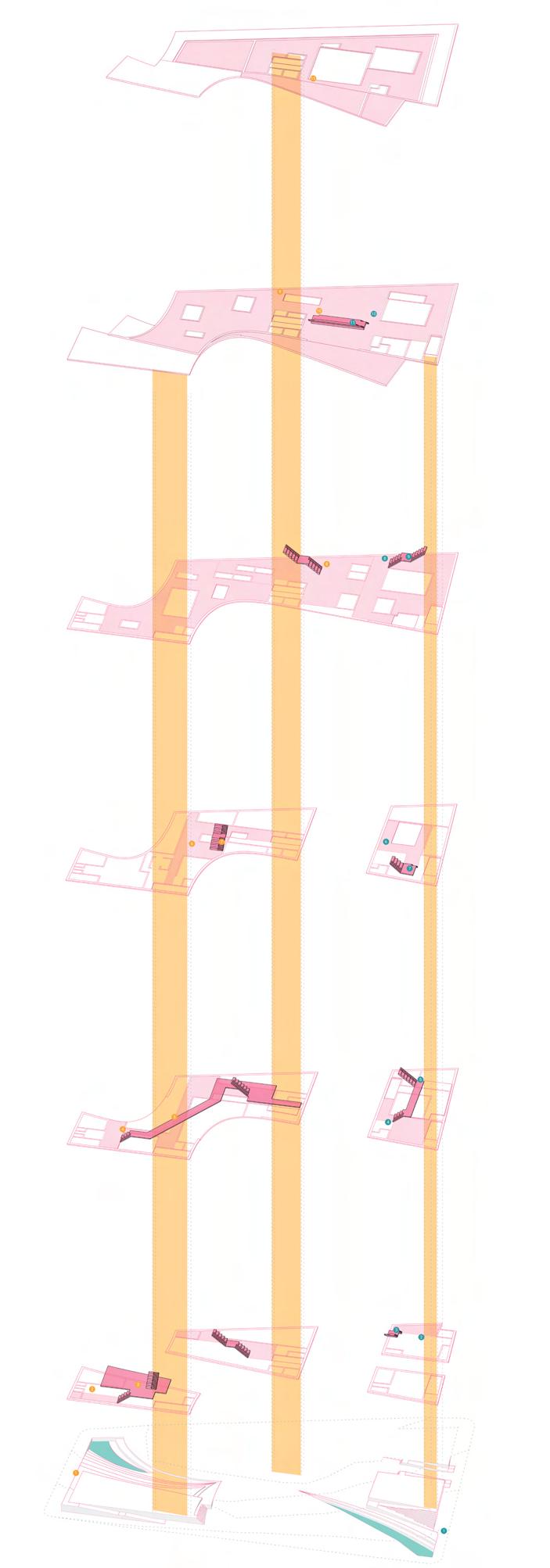
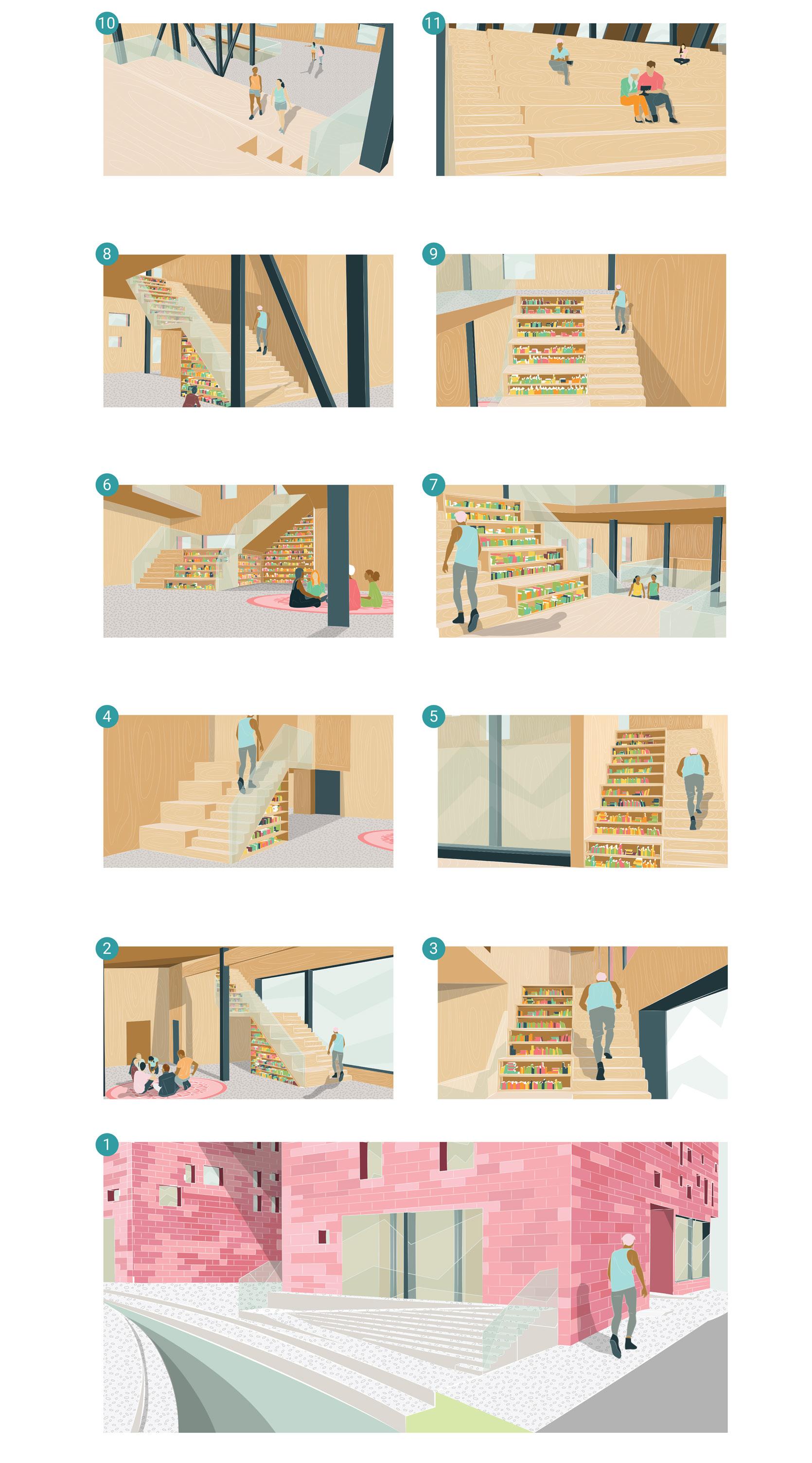

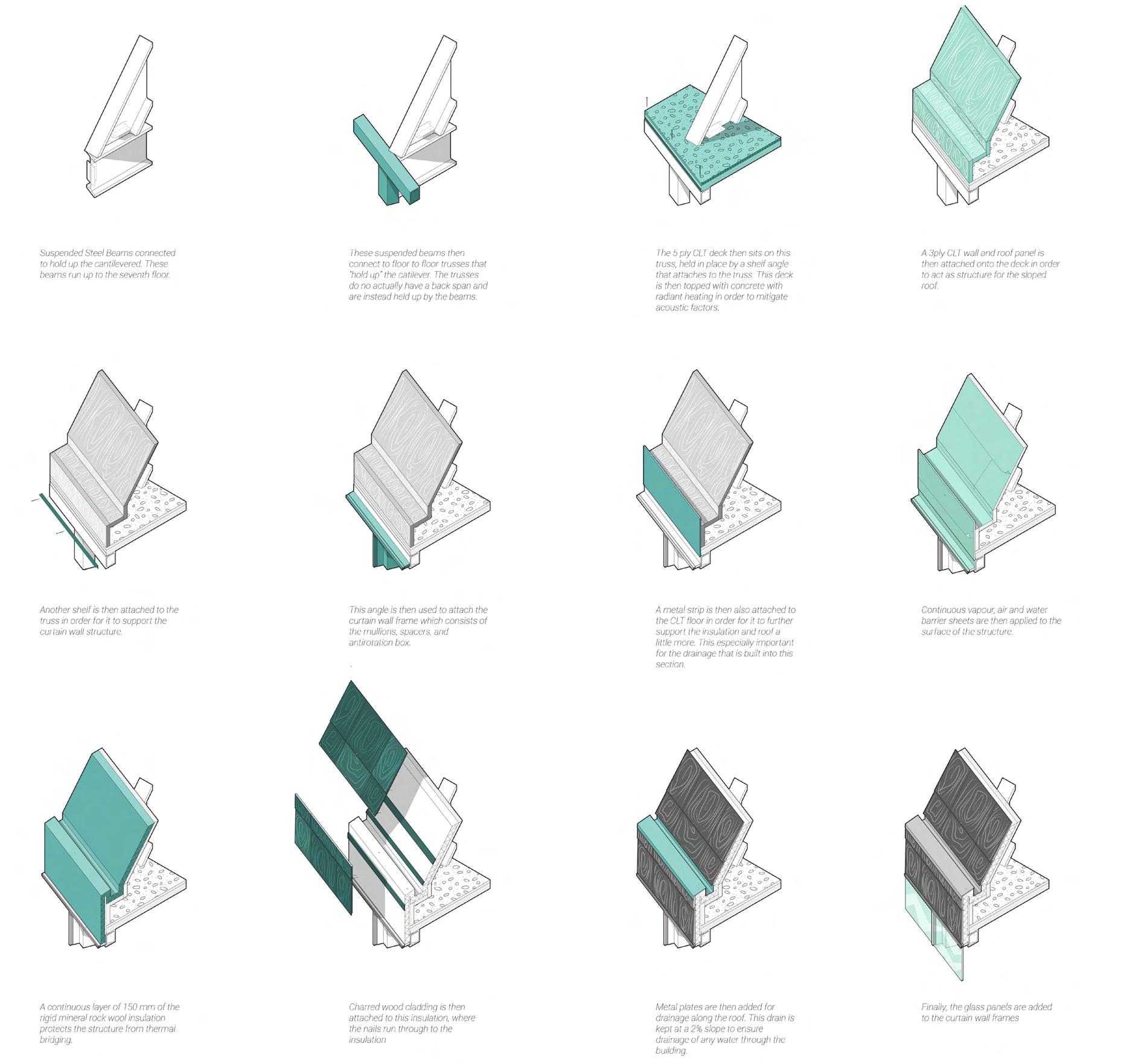 Envelope Assembly
Envelope Assembly
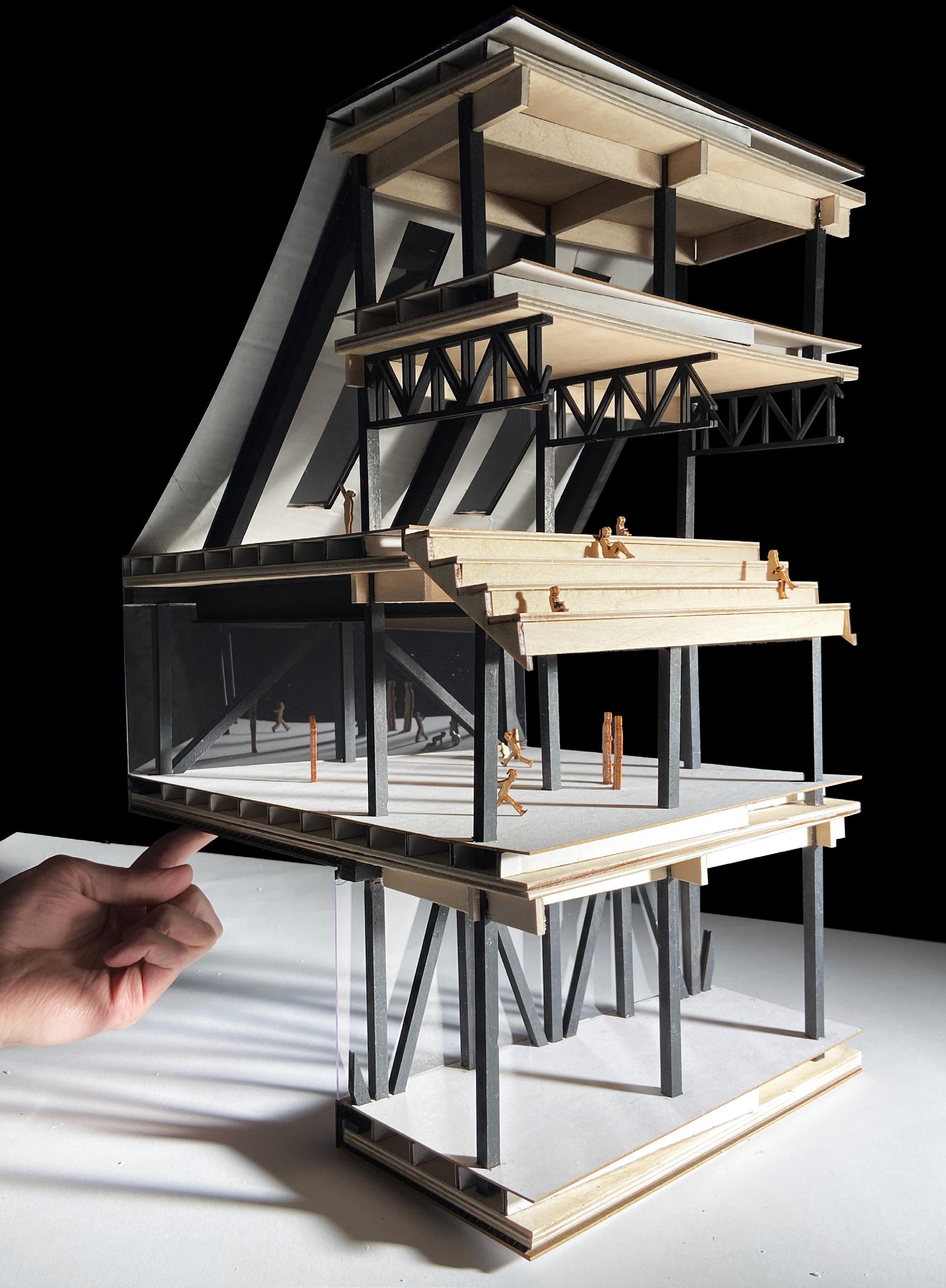

Thorncliffe Park, a neighbourhood of crumbling mid-rises from the 1960s and large industrial lots, is set to change drastically as it becomes a site for train maintenance and a station for the Ontario Line. Current demographics show a large immigrant population that greatly benefits from the role Thorncliffe plays as an arrival city in Toronto where many of the apartment buildings have adapted sprawling communities into vertical ones. Presently, the proposal by Metrolinx puts an important aspect of these communities at risk: the local strip mall where most of the businesses directly cater to the immigrant population. Our proposal accepts the imminent railyard while also providing an alternative to the lost businesses. Keeping the population in mind and the increasing house problem, the proposal consists of 8 mid-rise buildings, overtaking the Costco parking lot. These combination of market units and co-operative housing units, provide shared spaces and occupiable roof gardens for all the residents. The ground level, meanwhile, is open for all members of the community. With a curvilnear form that invites all in, it moves all the lost businesses into this space that can spill outdoors into green spaces, conducive to outdoor markets that are quite popular in this neighbourhood.

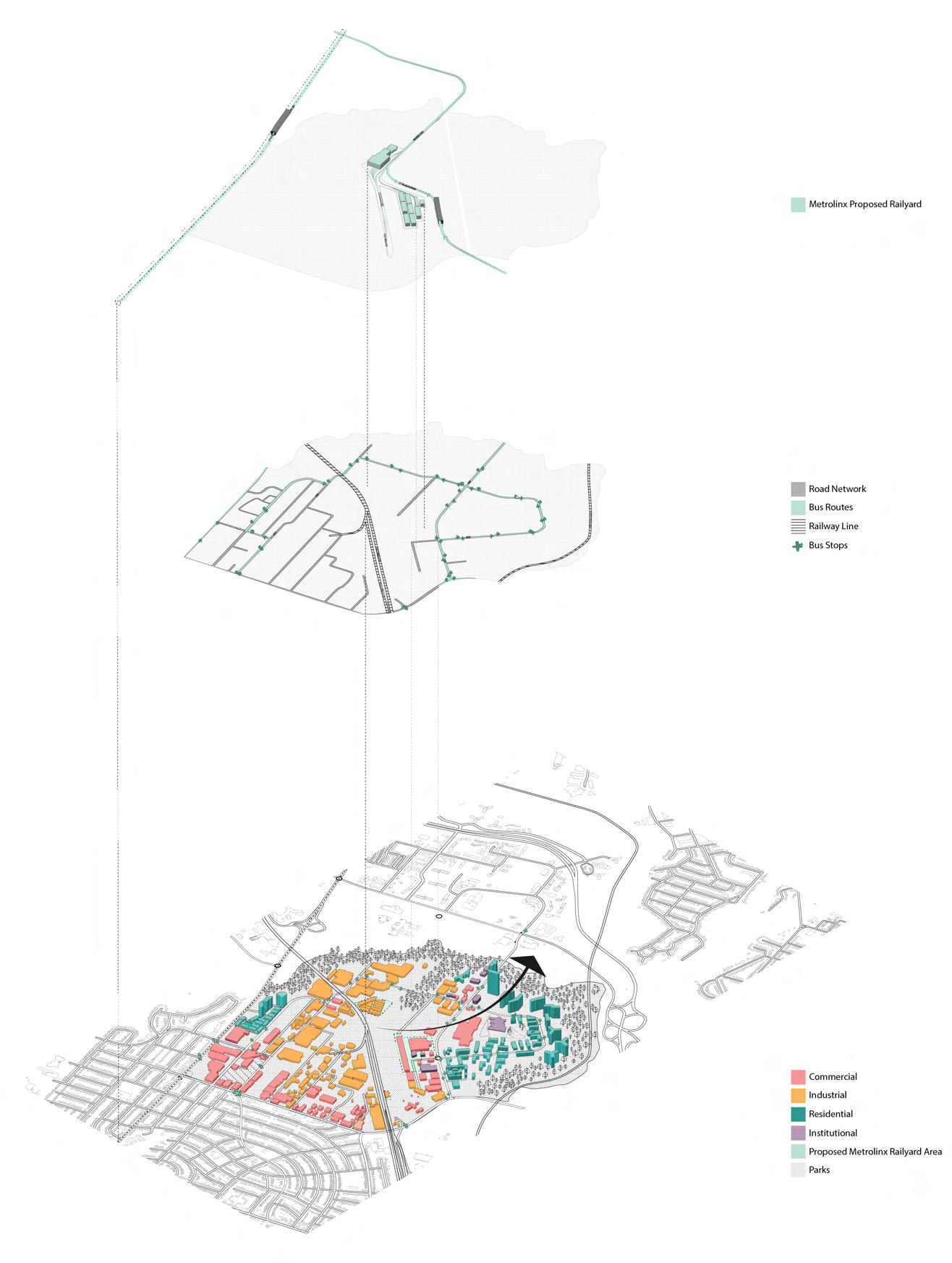
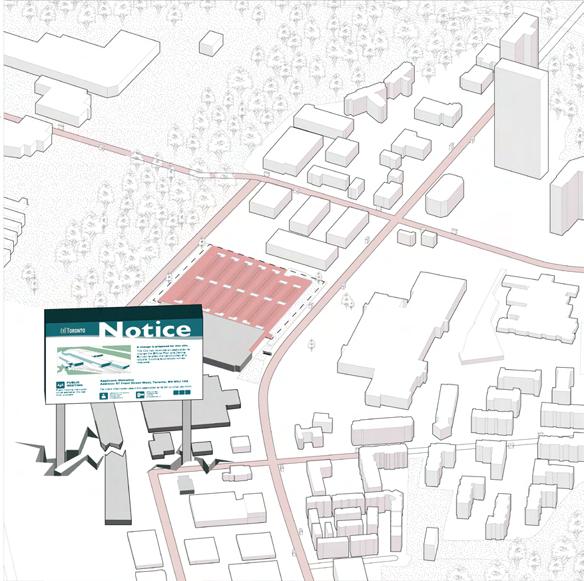

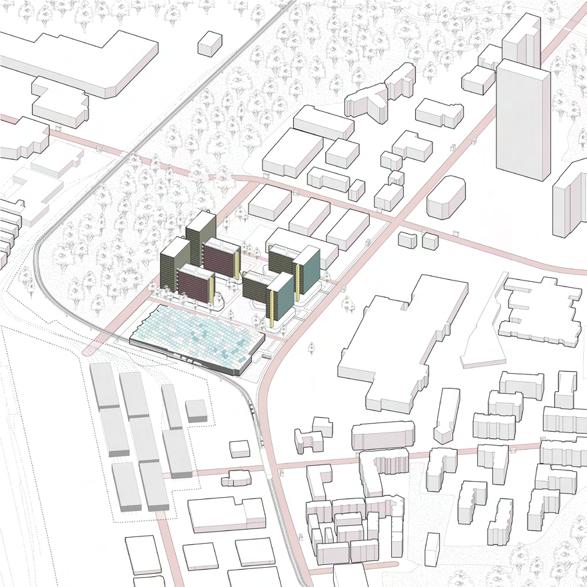
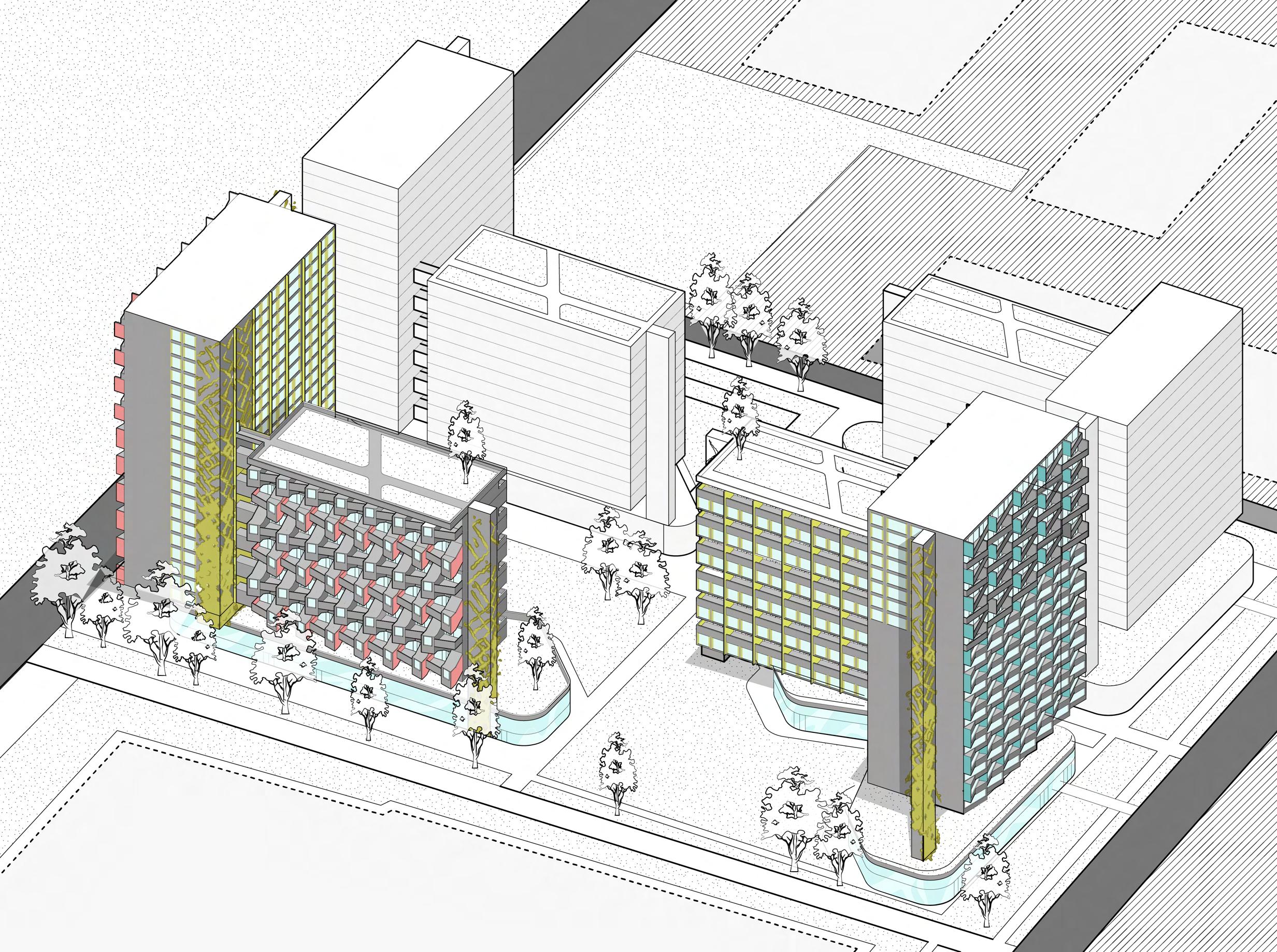 Axonometric
Alternate
Axonometric
Alternate
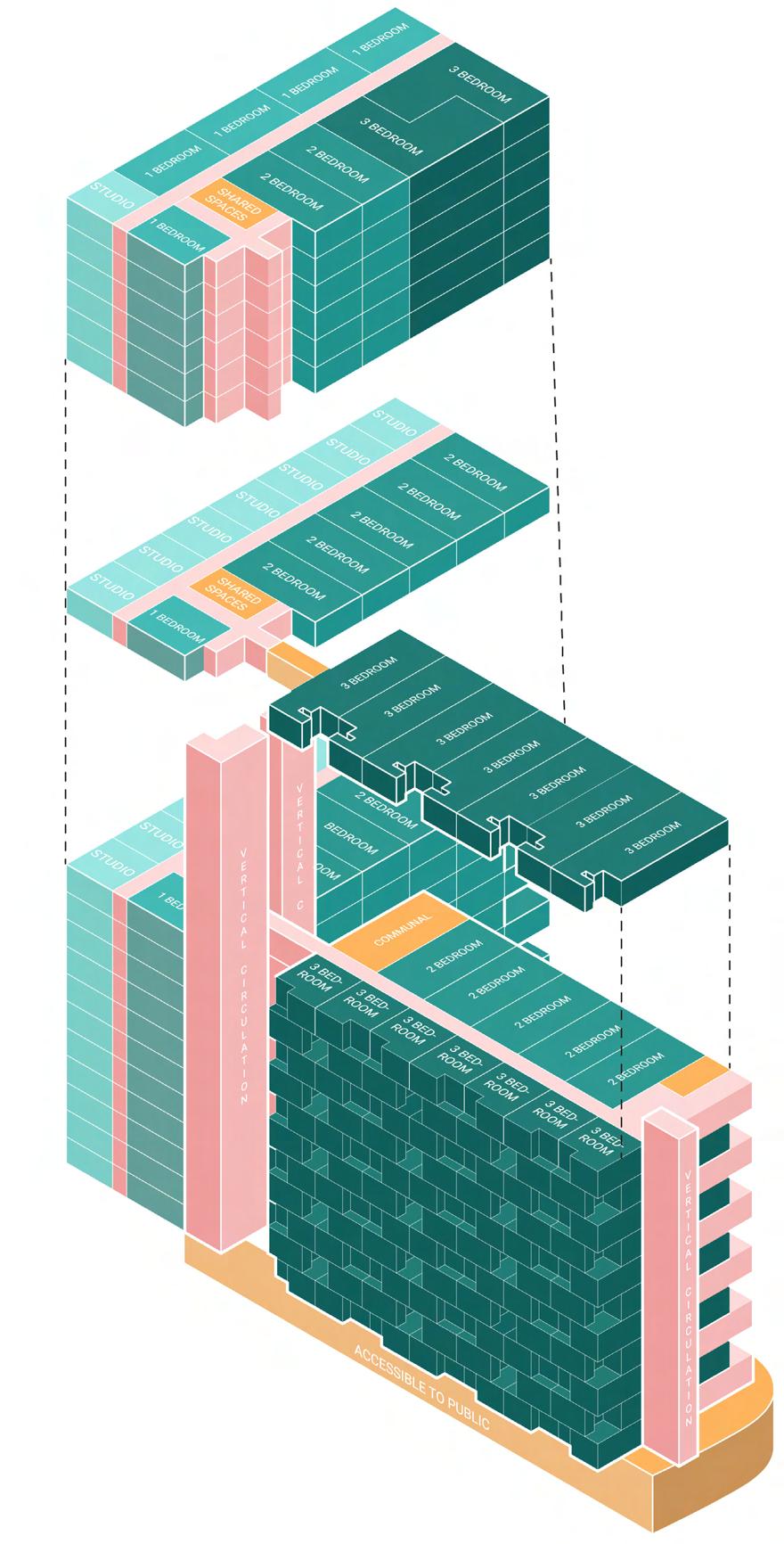
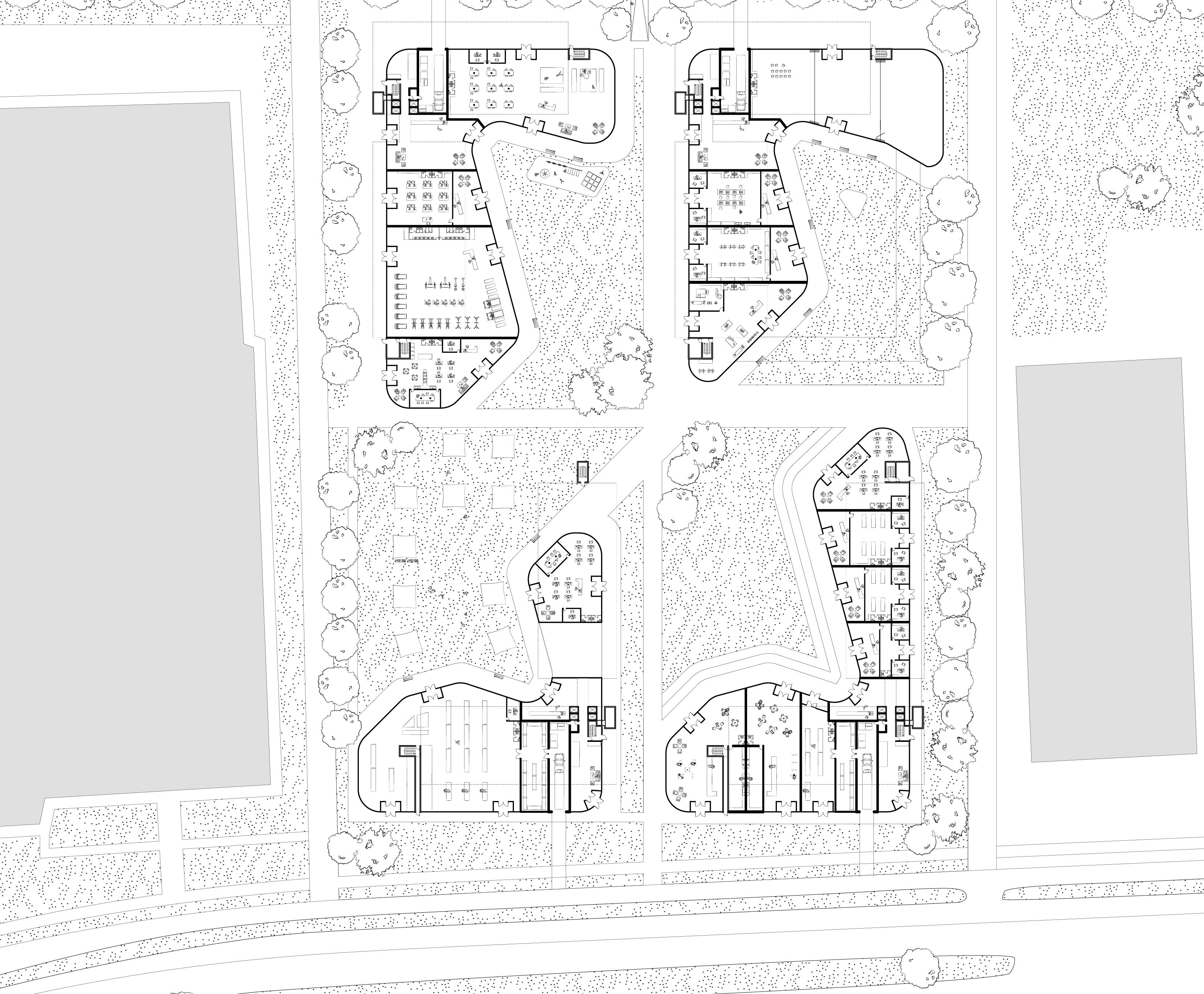
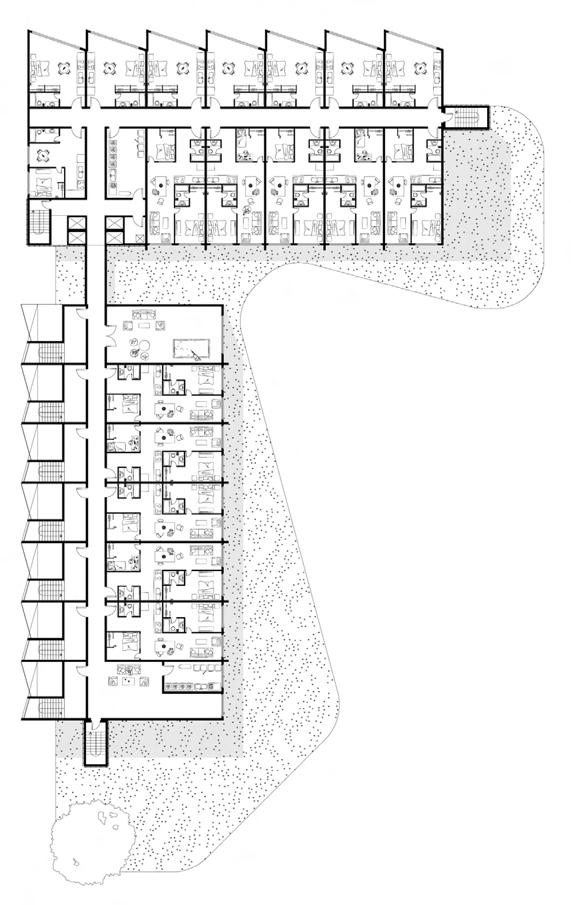
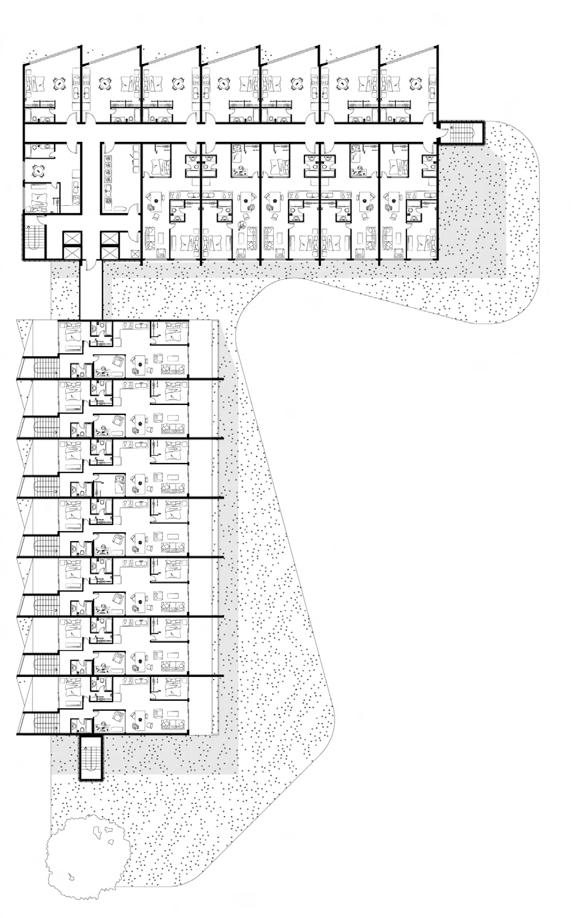

MUSEUM FOR CULTURAL EXCELLENCE: PATH TO RECONCILIATION
ACADEMIC | 2021
Canada’s history as a settler colony has been a very violent one, with active attempts made to either erase or exoticise First Nations cultural practices. The Woodland Cultural Center’s museum of excellence, situated in direct opposition to a former residential school, aims to make all visitors of this space confront this past. As a space designed to display “artifacts” that are still in use, it creates an awareness of the not so distant past where these atrocities occured and forces the user to recognise the very real pain that is still felt by survivors of residential schools today.
The opacity of the facade is a reflection of the knowledge and clarity the visitor gains as they walk through the space. The journey through the history exhibit is one of increasing isolation with a brief moment of release through the outdoor sculpture garden. This is followed by a return to the contemporary exhibit, intended as both a dispaly space and one for gathering. These spaces are derived from the folds of fabric that become increasingly distinct as certain “rooms” grow narrower. Throughout this journey, there is always a visual connection to the central space, through a sheer curtain whose progressively loosening folds allow for improved views into the space. And the learning through this journey ultimately leads into the contemporary exhibition where a moment of reflection awaits.


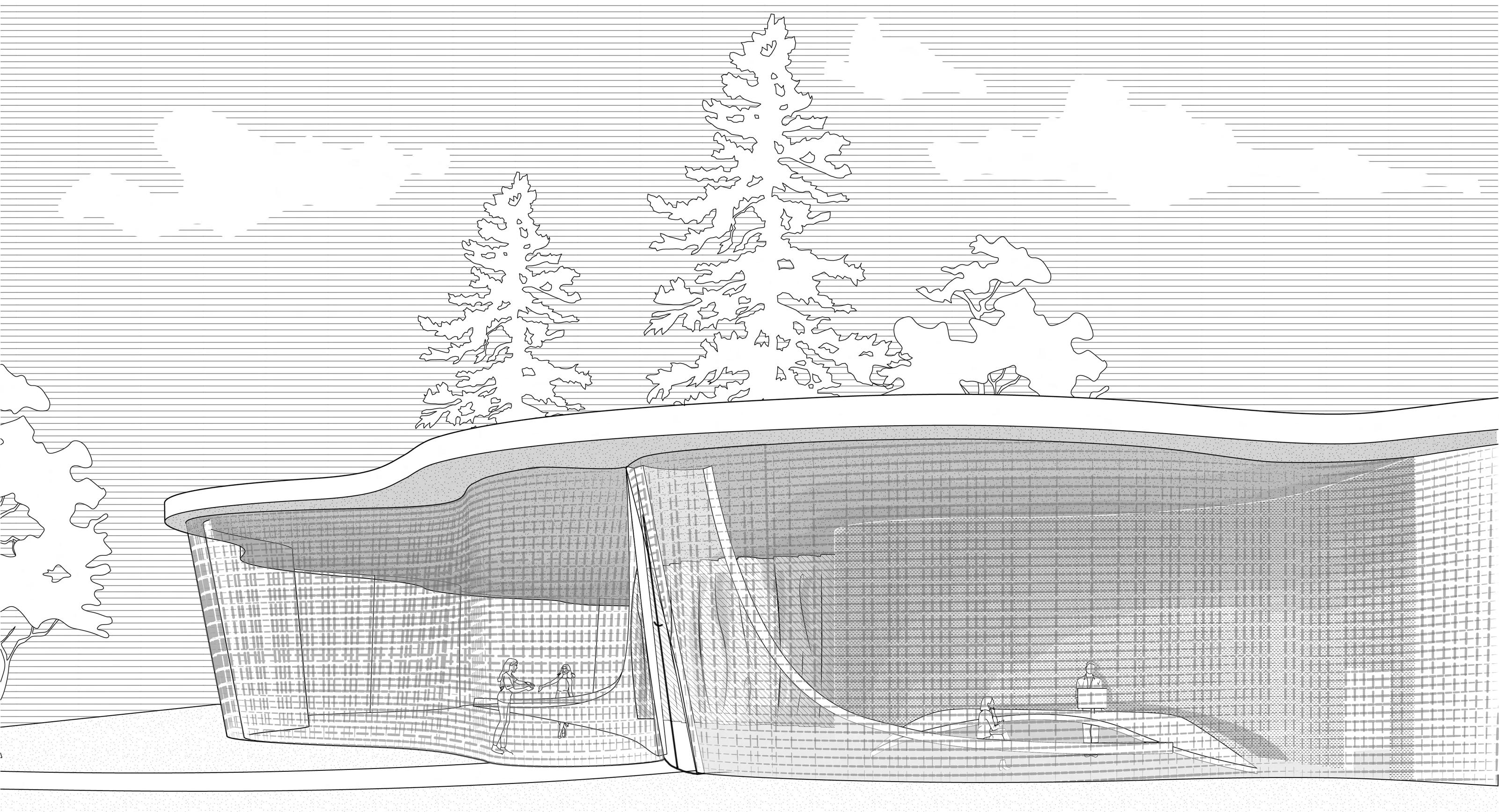
The programming of this space is further driven by Indigenous ways of knowing with entry through the eastern door. The central space is further defined by a fabric curtain covering all the plinths and benches to create a unified experience. This blurs the distinction between the viewer and the artifact thereby removing the artifact’s categorization as “other.” The resultant space’s goal is to not only move away from a sterile museum environment but to create one of gathering and conversation.




 Exhibition Space
Material Studies
Exhibition Space
Material Studies
PAKISTAN, PLASTIC & REPURPOSING
PROFESSIONAL | OPEN DOOR DESIGN STUDIO | 2021Climate change and its ramifications are fast becoming an inevitability. As this happens, countries in the global south are the ones expected to suffer the greatest. Unfortunately, in spite of this, these countries like Pakistan are rarely included in the conversation pertaining to the potential solutions. Open Door, decided to address these questions of sustainability and reuse through a variety of small scale projects in the summer of 2021. Among, these was the plastic recycling project, where questions of class, culture and sustainability were raised in relation to the role that architecture plays.
The following images are some pictures of early prototypes we made in their outdoor workshop, which is their growing archive of all material explorations taken on by the studio. Included in this spread is also a comic from a series meant to highlight existing recycling practices in the city.
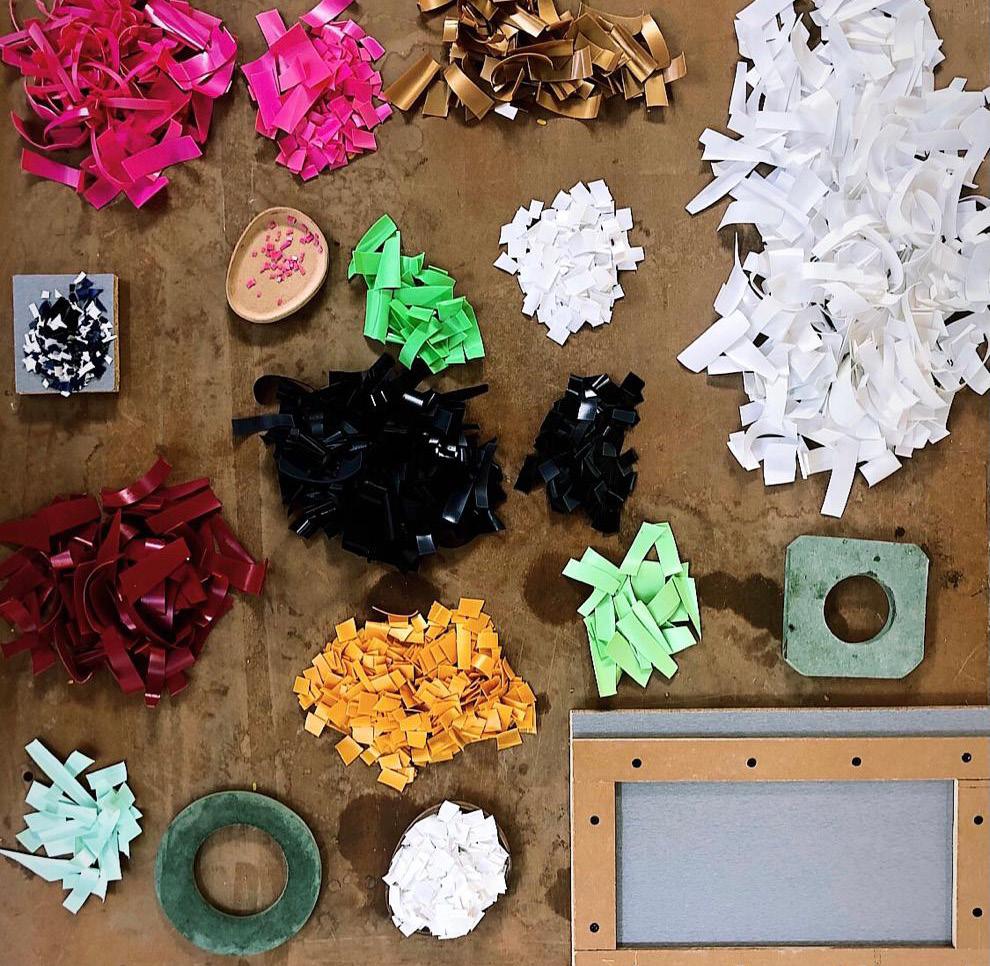


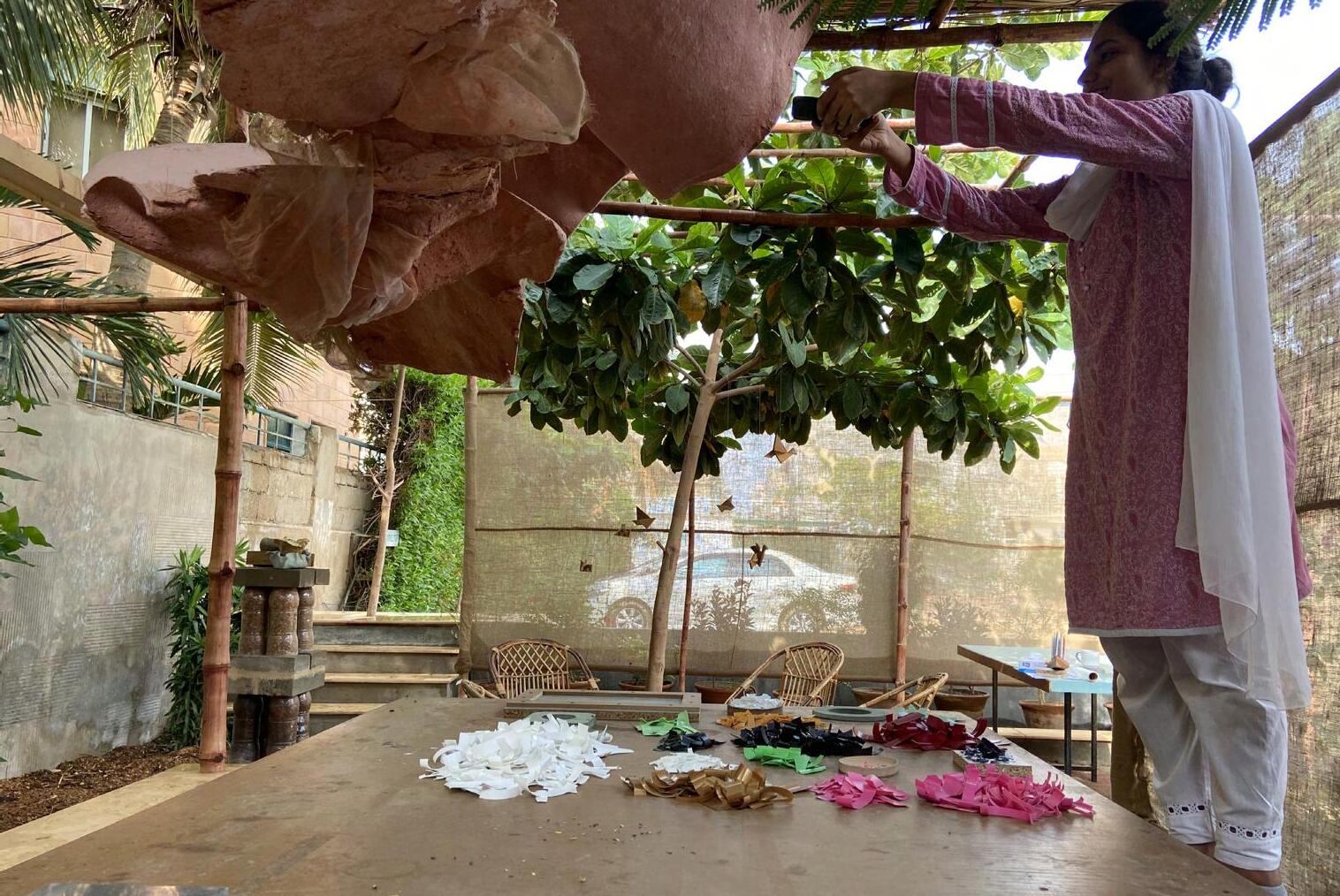
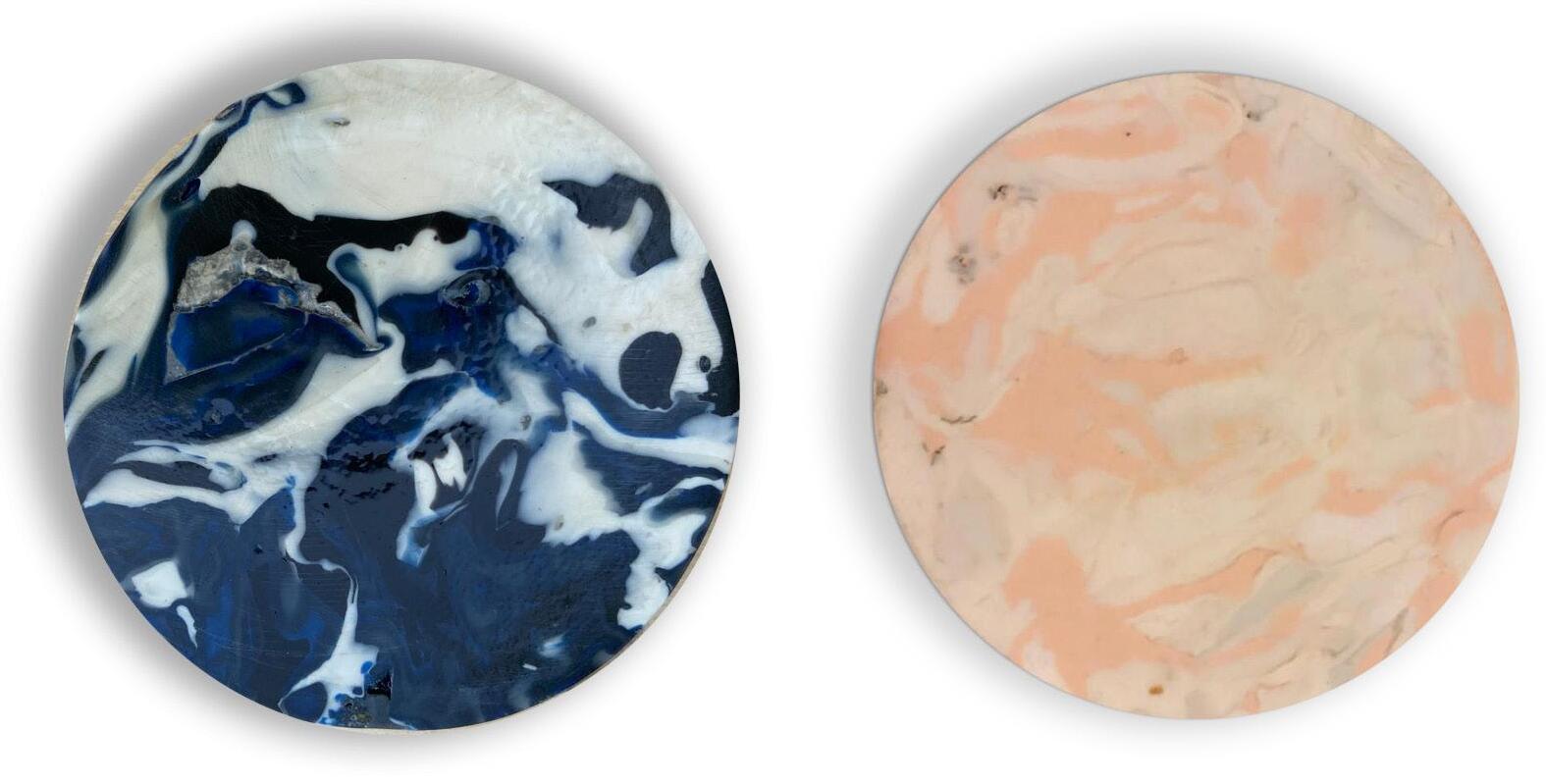
VISUAL STORYTELLING
PERSONAL & PROFESSIONAL | 2020-2023
I really enjoy the way architectural drawing can be used to communicate ideas and spaces in a variety of ways and styles. Outside architectural projects, I also like to use these methods of drawing to tell stories that share a little something about the people I know or the things I see!


